
OCTOBER 2020 GAL GADOT
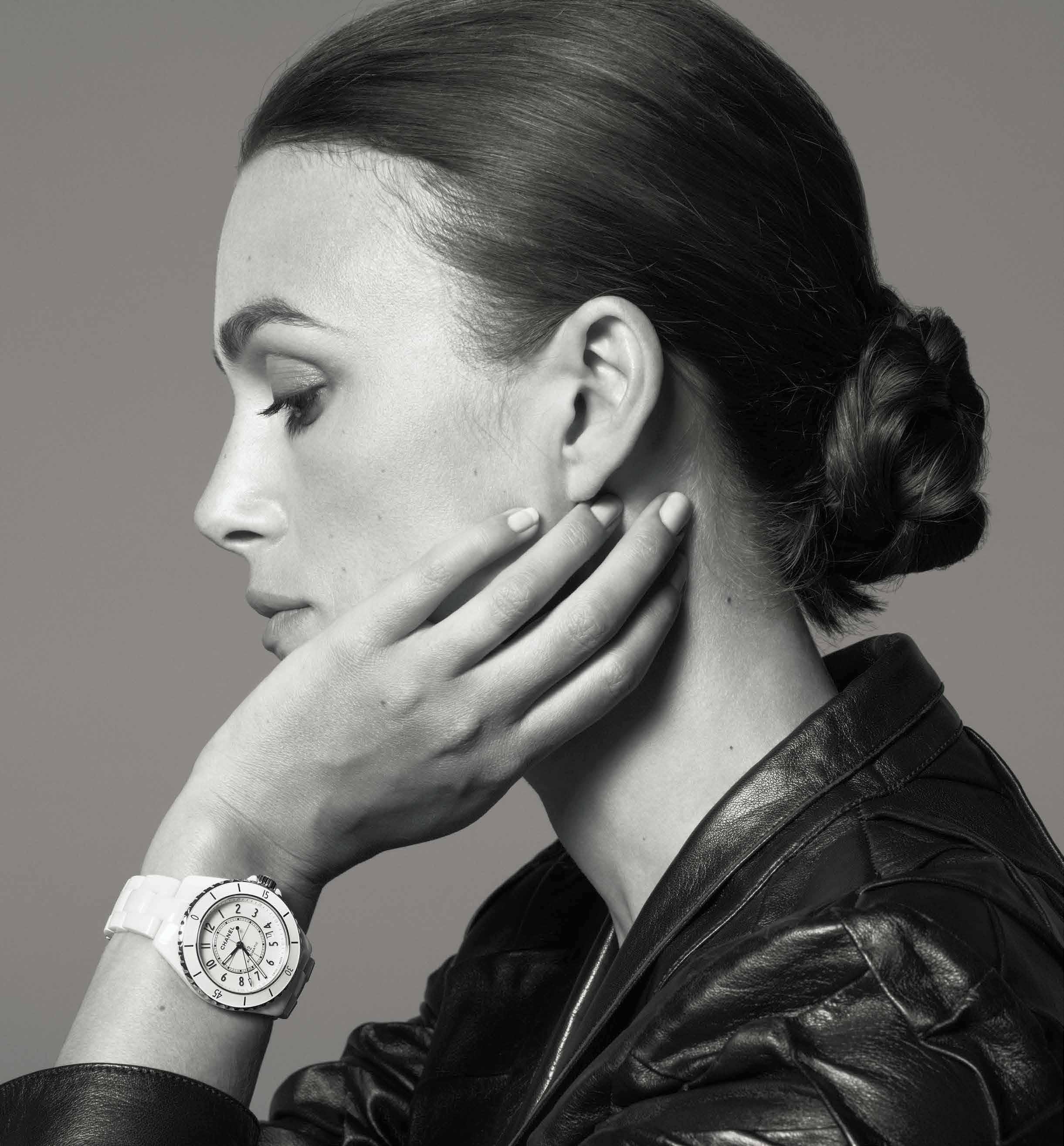
 KEIRA KNIGHTLEY
KEIRA KNIGHTLEY


self-winding manufacture movement Highly resistant ceramic watch. Swiss made. 5-year warranty. IT’S ALL ABOUT SECONDS CHANEL.COM
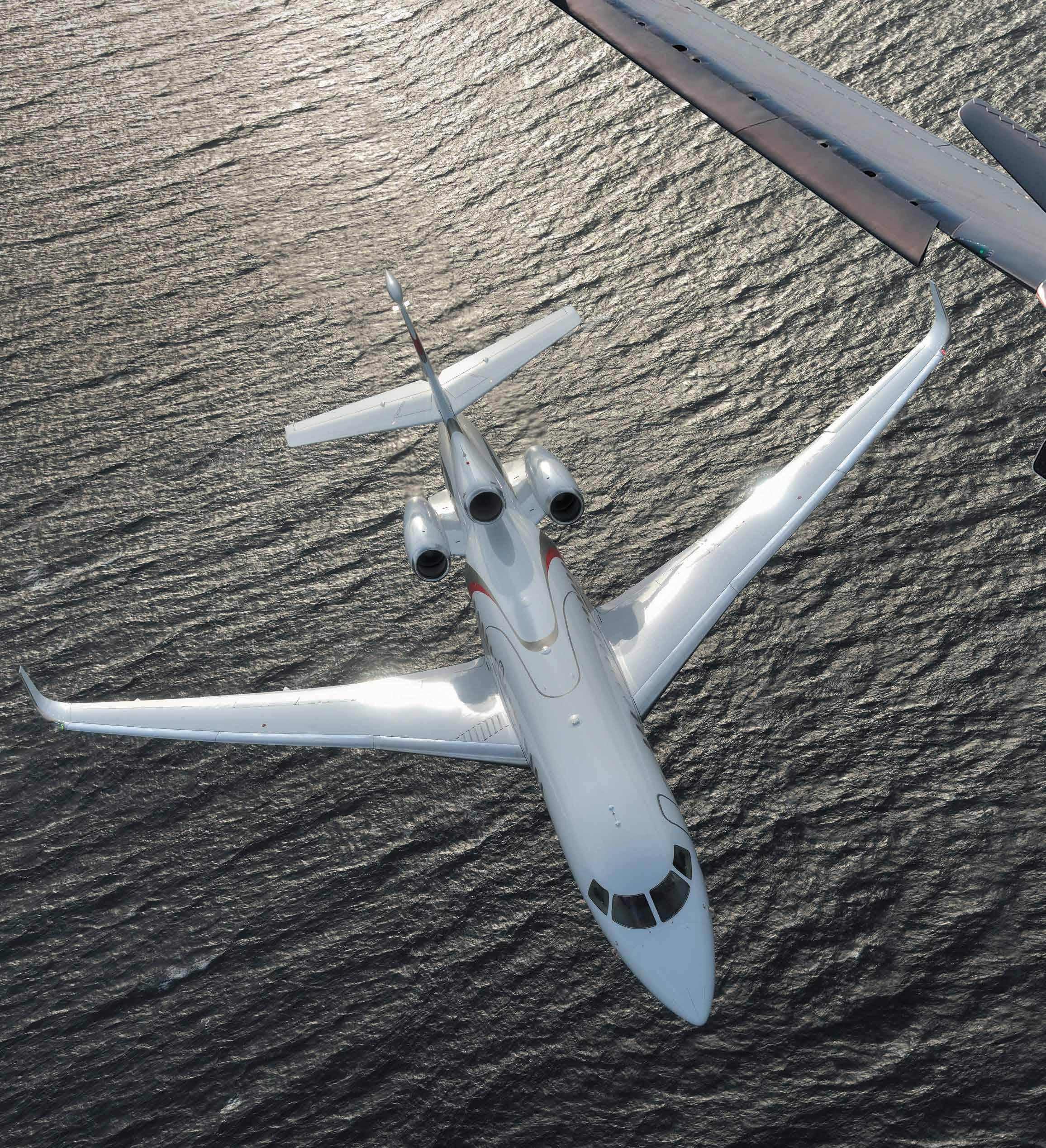
In nature, the falcon is a fierce fighter. In business, the Falcon 8X is just as powerful and agile. Every inch reflects its military DNA, with lean and mean aerodynamics and advanced Digital Flight Controls to get you to places others can’t. Nothing flies like a Falcon because no other jet is built like one. Fierce.

In nature, the falcon is a fierce fighter. In business, the Falcon 8X is just as powerful and agile. Every inch reflects its military DNA, with lean and mean aerodynamics and advanced Digital Flight Controls to get you to places others can’t. Nothing flies like a Falcon because no other jet is built like one. Fierce. Fast. Agile. Falcon 8X.
Fast. Agile. Falcon 8X.



FEATURES
Thirty Four Modern Marvel
Gal Gadot talks shedding tears and daredevil stunts as she reprises the role of Wonder Woman
Forty Stand By Me
In a year that would have seen River Phoenix turn 50, Louis Chilton considers his cinematic legacy.
Forty Six Elle and Back
The inside story of how designer Elle Mambetov overcame scandal and prison to become a breakout star.
Fifty Two Super Women
Known as ‘The Supers’, Naomi, Cindy, Claudia et al ruled the runway in the 90s. But why are they still in such demand?
AIR
Contents OCTOBER 2020: ISSUE 109 4











Fourteen Radar
Sixteen Critique
Twenty Art & Design
Twenty Two Timepieces
Twenty Six Jewellery
Thirty Two Objects of Desire
Fifty Eight Motoring
Sixty Six Journeys by Jet
Sixty Eight What I Know Now

Sixty Four Gastronomy
AIR meets Andrea Fazzari, the award-winning author and photographer whose quest to gain a greater undertstanding of sushi saw him shadow 20 revered shokunin for his latest book
AIR Contents
REGULARS
6 Tel: 00971 4 364 2876 Fax: 00971 4 369 7494 Reproduction in whole or in part without written permission from HOT Media is strictly prohibited. HOT Media does not accept liability for any omissions or errors in AIR
EDITORIAL Chief Creative Officer John Thatcher john@hotmedia.me ART Art Director Kerri Bennett Illustration Leona Beth COMMERCIAL Managing Director Victoria Thatcher General Manager David Wade david@hotmedia.me PRODUCTION Digital Media Manager Muthu Kumar OCTOBER 2020: ISSUE 109 Credit: © Andrea Fazzari

RARE, INDIGENOUS, CAPTIVATING
Experience the alluring, golden desert landscape, the captivating silence of nature, the free-roaming wildlife in the reserve, all enjoyed from your private suite and pool. Indulge in a luxurious desert adventure with camel treks, horseback riding, falconry, archery, dune drives and more.
FOR RESERVATIONS, PLEASE CALL +971 4 832 9900 OR VISIT AL-MAHA.COM
HOTELS THAT DEFINE THE DESTINATION
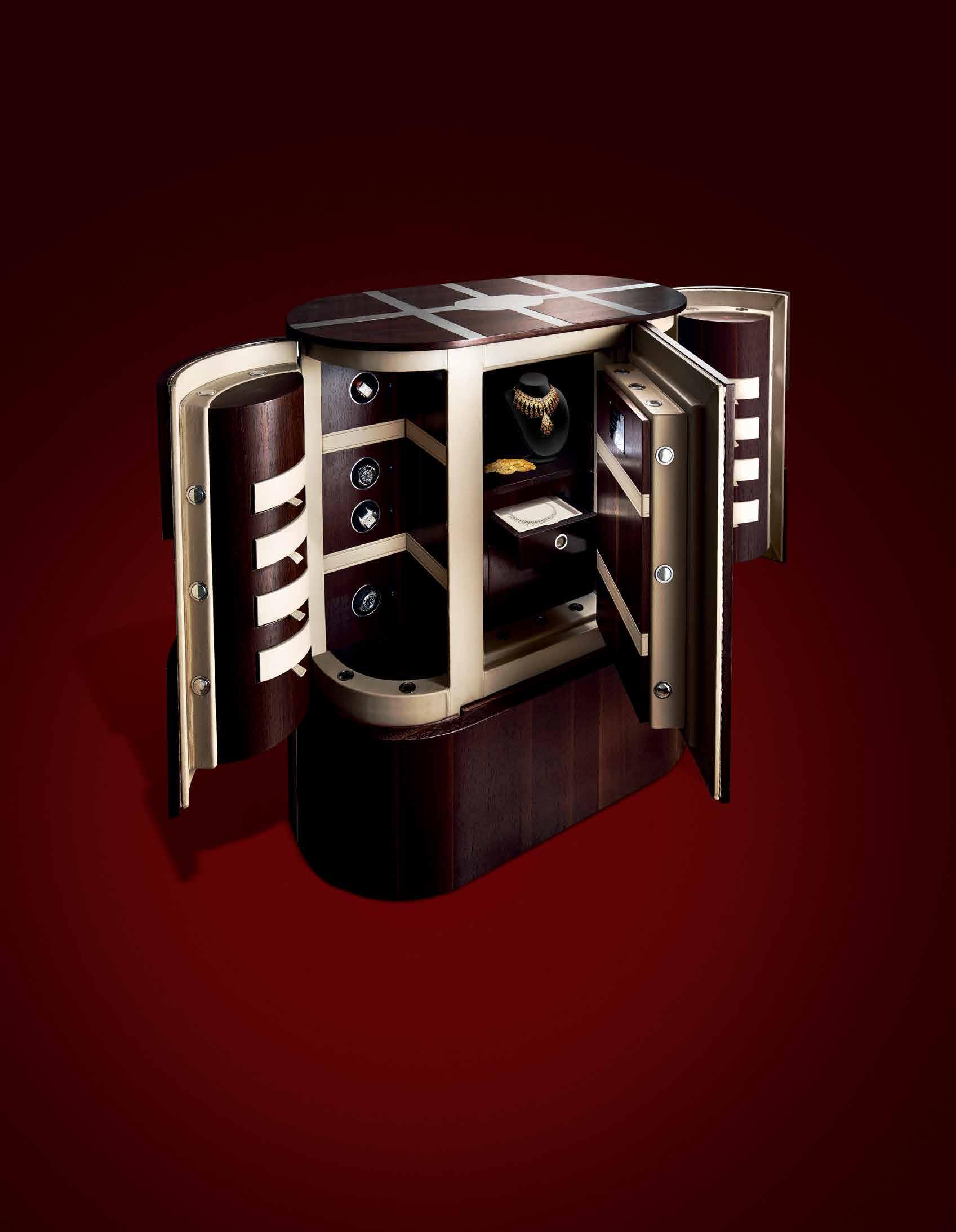
Welcome Onboard
Welcome to AIR, the onboard private aviation lifestyle magazine for Al Bateen Executive Airport, its guests, people, partners, and developments.
We wish you a safe journey wherever you are going, and we look forward to welcoming you back to Al Bateen Executive Airport - the only dedicated business aviation airport in the Middle East and North Africa - to further experience our unparallelled commitment to excellence in private aviation.
Al Bateen Executive Airport
Contact Details: albateeninfo@adac.ae albateenairport.com

9
OCTOBER 2020
Cover : Cover : Gal Gadot Tesh Patel/AUGUST

Flying into the Future
Abu Dhabi Airports shares its view on the future of chartered aviation
In the modern age of air travel, the height of luxury is to travel by private aircraft. Private aircraft allow for the ultimate in convenience and luxury, enabling their passengers to move around the world with ease, style and comfort. Their use has traditionally been reserved for the most exclusive of customers: those able to meet the expense of operating and maintaining a private plane.
However, in the modern age of air transport, this status quo is beginning to shift allowing a much broader range of passengers to experience the luxury of private air travel.
Chartered air travel has been a part of the history of aviation, but the sector has been growing over recent years in size and scale.
With chartered private aircraft companies being able to reach larger market segments through online bookings, the market valuation of the global chartered air services sector is currently valued at USD$1.2 billion. Over the subsequent five years, the market’s size is anticipated to grow at a CAGR of 11.4%, reaching USD$2.2 billion in 2024. Through being able to access a larger market segment through online systems, chartered services are able to appeal
to a significantly wider range of customers and clients interested in benefiting from the services offered by charter airlines.
Through enjoying a wider customer base, chartered services can grow their fleets and lower prices, appealing to a wider range of potential passengers looking for the very best that modern aviation can offer. Airport infrastructure is thus going to have to change over the next decade to meet an increase in both fleet side and passenger numbers, which are arriving and transiting through executive airports.
It is worth emphasising that
AIR 10 Al Bateen OCTOBER 2020: ISSUE 108
Al Bateen Executive Airport

Al Bateen Executive Airport is the first dedicated private jet airport in the Middle East and North Africa (MENA) region. Our exclusive status offers ultimate and prestigious luxury with several enhancements currently underway.
We offer: The , and only



Al Bateen

this change is not only limited to private jets making short or long haul flights around the globe, but also helicopters and light aircraft making long journeys on the road realisable in a far faster time frame.
Executive airports will need to update the infrastructure they have put in place for managing aircraft fleets to ensure that they can offer chartered air services a fast turn round time that meets customers’ expectations.
Of equal importance is reviewing and updating the existing infrastructure which is provided for passengers who are arriving at the airport, and being able to provide the height of luxury to those about to step on board a private flight of their dreams.
At Al Bateen Executive Airport, situated in the centre of Abu Dhabi city, we welcomed 405,518
passengers in 2019, and supported 26,795 aircraft movements.
We are proud to offer clients using our bespoke services a range of unique benefits, and we are continually seeking to update our landside and airside infrastructure to accommodate to their changing needs. These expansions include a new 2,200 square metre VVIP facility and improvements to our terminal and lounges for passengers arriving and departing from the city. In addition, we are upgrading the airport’s runway, taxiways, aprons, and hangers, as well as developing a new fuel farm for private aircraft. With these improvements, we are the executive airport of choice for passengers seeking to travel in the best that aviation can provide, both within the Middle East and internationally.
12
OCTOBER 2020: ISSUE 109
Al Bateen Executive Airport

and detail that shape your journey.
Immerse in the luxury of rich experiences at the JW Penthouse Suite and Marquis Penthouse Suite, spread across two levels of impeccably designed space with a touch of traditional Arabic design. Each 624sqm suite features two separate bedrooms with two separate living rooms.
Additional benefits include complimentary airport transfers, private check-in and check-out and access to the Executive Lounge on the 37th floor.
Enjoy celebratory dining in 10 award-winning restaurants and bars, and pampering at the luxurious Saray Spa.
JW Marriott® Marquis® Hotel Dubai marriott.com/DXBJW Sheikh Zayed Road, Business Bay, PO Box 121000, Dubai, UAE | T +971.4.414.0000 | jwmarriottmarquisdubai.com Service
Acclaimed fashion photographer Giovanni Gastel has shot for the likes of Dior, Vogue and Vanity Fair, but it’s his remarkable portraits which are the subject pf a new exhibition at Rome’s MAXXI National Museum of 21st Century Arts, until November 24. About 200 portraits are on display, featuring faces he has encountered during his 40-year career from the worlds of culture, design, art, fashion, music, entertainment and politics. People like architect and designer Ettore Sottsass, whom, as Gastel says, “have passed on something to me, taught me, touched my soul.”
Radar OCTOBER ISSUE 109 14 AIR Image: @ Giovanni Gastel

15
Critique Film

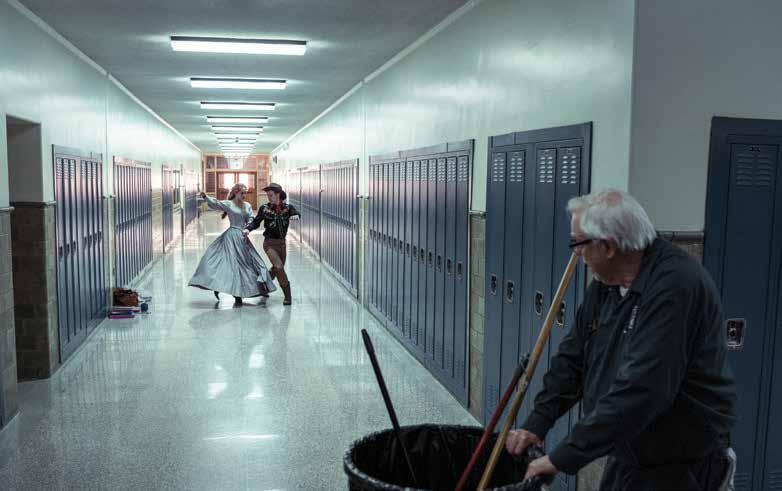


The New Mutants
Dir. Josh Boone
Four young mutants held in an isolated hospital for psychiatric monitoring battle to make it out alive when strange occurrences begin to take place within the hospital.
AT BEST: ‘Fox’s last X-Men movie is an unholy mess... Out of the wreckage, a cult classic has been born.’ – Charlotte O’Sullivan, London Evening Standard
AT WORST: ‘A flat and pointless film we really need never concern ourselves with again’ –Paul Mount, Starbust
I’m Thinking of Ending Things
Dir: Charlie Kaufman
Trapped by a snowstorm on the farm of her new boyfriend’s family, a young woman begins to question the nature of everything she knew or understood about her boyfriend and herself.
AT BEST: ‘Truly, an experience, Best watched with the lights off, in splendid isolation.’ – Harry Guerin. RTE
AT WORST: ‘Despite the quality of the acting, I’m afraid I found [it] almost unendurably grim’ – Daily Mail
Antebelum
Dir: Gerard Bush, Christopher Renz
A successful author discovers herself trapped in a horrifying reality and must uncover the mind-bending mystery before it’s too late.
AT BEST: ‘A nightmarish out-of-body experience.’ – Aaron Neuwirth, We Live Entertainment
AT WORST: ‘Wants to act as if it has something deep to say about the state of racial issues in the world today but handles it in completely the wrong way.’ – Peter Gray, crpWrites
Bill & Ted Face The Music
Dir. Dean Parisot
The return of the time-travelling duo, now middle-aged, sees them set out on a new adventure when a visitor from the future forewarns them of future peril.
AT BEST: ‘A winningly silly jam sesh with two lovable lunkheads.’ –Charles Bramesco, Little White Lies
AT WORST: ‘It’s basically the same shtick that we’ve already seen twice before.’ – Wade Major, FilmWeek
16 AIR
Credits © 2020 Twentieth Century Fox Film Corporation; Matt Kennedy; Mary Cybulski/NETFLIX © 2020; Patti Perret OCTOBER 2020 : ISSUE 109


A relaxing realm of quiet luxury, Saray Spa at the JW Marriott Marquis Dubai is an authentic wellness spa, where ancient healing techniques and locally sourced natural ingredients are combined to pay homage to its Arabian heritage.
The spa features 17 treatment rooms, inclusive of two private hammam rooms and and two Private Luxury Spa Suites. Experience the wonders of the Middle East through Arabian body or hammam rituals, or benefit from anti-aging and hydrating facial treatments.
Luxury Facial and Massage Package
Treat yourself to a relaxing top-to-toe retreat that begins with a customized Saray Spa facial and finishes with a complimentary massage of your choice. Starting from AED 680 for a 1 hour facial and a complimentary 1 hour massage.
Oriental Hammam Experience
Relax and unwind with a special offer on all hammam treatments. Book the offer of your choice and pay 40% less. Valid until 31st October.

JW Marriott Marquis Dubai | Sheikh Zayed Road, Business Bay, PO Box 121000, Dubai, UAE
T +971 4 414 6754 | mhrs.dxbjw.spa@marriott.com
jwmarriottmarquisdubailife.com
Comprising ten stories, Daddy, by Emma Cline, delves into the lives of characters whose daily lives are buckling under the weight of pressures. “Cline is reckoning with a post-#Me Too landscape: burrowing inside the minds of the sort of privileged men who assumed they’d always get away with it. Who believe they couldn’t possibly be one of the ‘bad’ ones. Who perhaps haven’t, technically, done anything wrong, but whose attitude to women, and controlling impulses towards their offspring, speaks volumes,” says Holly Williams, writing in The Guardian. “I’ll be interested in how convinced middleaged male reviewers are, but I found Cline’s insights persuasive, even if the territory does become repetitive.”
Thinking along the same lines, Marion Winik, reviewing for The Washington Post, says: “I could not help feeling discouraged by the author’s coldness toward her male characters. Nonetheless, the book is so well-written – not to mention short – and just elusive enough that I find myself wanting to re-read the stories, to think about them, to talk to someone about them.”
Though praising the stories as “Well

crafted”, Kirkus Reviews opines that, “Cline’s voice is understated; her pace is slow and steady. The reader arrives at the central conflict of the story obliquely – or, in some cases, not at all. The details of the misdeeds at the heart of [the stories] Menlo Park and Northeast Regional are never revealed. There’s a sameness to these stories, and a few read as if the moments in time they depict were chosen at random.”
Impressed, however, was Esquire: “Daddy’s ten masterful, provocative stories confirm that Cline is a staggering talent.”
Transcendent Kingdom is Yaa Gyasi’s stunning follow-up to her acclaimed national bestseller and tells the story of Gifty, a sixth-year PhD candidate determined to discover the scientific basis for the suffering she sees all around her. “Laser-like… A powerful, wholly unsentimental novel about family love, loss, belonging and belief that is more focused but just as daring as its predecessor, and to my mind even more successful,” writes Sam Sacks in The Wall Street Journal. Equally enthused was Ron Charles of The Washington Post. “A book of blazing brilliance… of profound

scientific and spiritual reflection that recalls the works of Richard Powers and Marilynne Robinson… A double helix of wisdom and rage twists through the quiet lines…Thank God, we have this remarkable novel.”
“Elegant… burrows into the philosophical, exploring with complexity what it might mean for us to live without firm answers to the mysteries that wound us… The measured restraint of Gyasi’s prose makes the story’s challenging questions all the more potent,” says The San Francisco Chronicle, heaping further praise.
Nick Hornby returns with Just Like You, a love story about what happens when the person who makes you happiest is someone you never expected. “In this age of lockdowns and social distancing, the novel asks timely questions about how people manage to connect when confronted with seemingly insurmountable obstacles. Sometimes, this brutally funny novel suggests, the perfect match might be the person who’s utterly unlike you,” says The Millions While the Library Journal agrees that this is, “A hopeful balm for our unsettled postpandemic times.”

18 AIR Critique
Books
Credit: Penguin Random House
OCTOBER 2020 : ISSUE 109
Critique Art

Showing at Tate Britain until Jan 31 2020, Steve McQueen Year 3 is a celebration of multicultural London, shown through school photographs of Year 3 children. “Seven is a pivotal age, it’s when you start figuring out the world, taking it in and understanding your place in it,” says Eddy Frankel in Time Out London. “McQueen’s project is a portrait of that, of childhood’s slow morph into imminent adolescence. But way more obviously, it’s a celebration of this city’s [London] diversity, its vast variety of races, cultures and backgrounds, all played out and glorified on these walls. It’s census as art. And every day, the kids from these schools are being bussed in to see their faces on the walls of the Tate. Can you imagine how powerful that is?”
Writing in The Guardian, Laura Cumming says, “There are schools with 32 pupils to a class, and schools with five children in a Georgian salon. There are home schools and sports academies, free schools and pupil
referral units, although not a single image is captioned. This is surely crucial, a principled egalitarianism. No seven-year-old is to be pigeonholed according to the kind of school their parents chose for them.”
Not so easily won over was Harry Thorne, writing for Frieze. “McQueen’s intentions are good. Not only has he stated that Year 3 will not be sold (the pictures will be returned to the participating schools at the end of the exhibition), he is mounting a very visible defence of both innercity diversity and the necessity of safeguarding an education system that, as a result of ongoing cuts to government funding, is close to disrepair. Yet, while commendable, these views are anything but radical. Moreover, although McQueen raises these topics, he does little to provoke further discussion of them.”
Also in London, at the city’s Hayward Gallery until the end of this month, Among The Trees shows how 38 artists
have displayed trees in their work. “Many of the works here inevitably suggest fragility,” says Ben Luke for London Evening Standard. “Simryn Gill’s photographs show plastic debris choking Malaysian mangroves. Roxy Paine’s diorama is all too familiar: a landscape reduced to ash. Steve McQueen and Sally Mann’s images feature landscapes scarred by white suprematism and war. At times, the show feels scattergun: it’s at its best when thematic groupings are tight or where there are several works by a single artist.”
Writing for The Arts Desk, Sarah Kent comments, “Our relationship with trees is deep, long and often nasty and a survey of the topic is inevitably a mixed bag. Some of the work is irritatingly anthropocentric, but this alone is a useful reminder of the problem. We behave as if nature were largely a resource to be exploited, regardless of our inextricable links with it.”
19
OCTOBER 2020 : ISSUE 109
Portrait of Steve McQueen in Year 3 at Tate Britain

A Rare Luxury
Mercedes and Virgil Abloh team up to create a one-of-a-kind artwork
Some 40 years on from its birth, the design of the Mercedes G-Class has changed very little. Proof, perhaps, that style never goes out of fashion. It was with great intrigue, then, when Mercedes announced Project Geländewagen, a conceptual design collaboration between the brand and Virgil Abloh, chief creative director and founder of Off-White and men’s artistic director of Louis Vuitton, whose brief was to create a one-of-akind re-imagination of the iconic car. The reason? Charity, first and foremost
– the scale model will be auctioned by Sotheby’s this month with the proceeds (it has an estimate of $60,000$80.000) to be donated in support of the arts and the international creative community at what is a critical time.
“Mercedes-Benz today is much more than a luxury carmaker; it is a design brand and luxury label. One major reason for our success story is our aesthetic soul and the unique style of our house.” says Gorden Wagener, the brand’s chief design officer. Project Geländewagen is certainly unique.
OCTOBER 2020:ISSUE 109 Art & Design AIR 20



Its reference point was a racing car. Themselves owners of Gs, Abloh and Wagener were both keen for their imaginative creation to “maximise its Mercedes-AMG attitude.” As such, the G has been lowered and widened to show off a new sporty side. While outside everything has been pared back – no need for indicators, outside mirrors and the usual bumper bar here, but you will see racing tyres and body-cladding –inside it’s more a case that everything familiar to the G has been ripped out. The dashboard is removed and replaced with a set of analogue gauges (designed in the style of a classic car) with the steering wheel and seats intended to mimic Formula 1 styling. A safety frame and five-point harnesses are other overt concessions to the need for speed.
“Mercedes Benz, for me, is a brand that embodies emotion,” says Abloh. “The initial idea was to question, to sort of make this twist on reality and speed. To have this car that is luxurious in a deconstructed way.”
Deconstructed is a term you could easily apply to the model’s paintwork, which was partially sanded by hand to look like the typical underlining of a car.
“The thinking behind the paint is so it runs away from the idea of perfection; to embrace the human touch,” explained Abloh.
“We created a unique artwork that showcases future interpretations of luxury and the desire for beauty and the extraordinary. We turned an off-road icon into racecar. To me, this is a very progressive step towards the future of luxury,” said Wagener.
A Charity Auction Collaboration with Mercedes-Benz, Gorden Wagener & Virgil Abloh, takes place on October 2 via sothebys.com

21
Time Honoured
WORDS: JAMES GURNEY
Drive into the Vallée de Joux, in the Jura Mountains above Geneva, and you’ll find a landscape that feels far more remote than an hour’s drive from the airport would suggest possible. Snow sits here long after spring has been and gone in the city below, creating a sense of apartness that tallies with the place’s reputation as the bastion of traditional high-end watchmaking. Even Genevan brands such as Patek Philippe and Vacheron Constantin maintain ateliers in the area to ensure access to its watchmakers. It’s a perception that is confirmed when almost the first building you face on entering the valley is Audemars Piguet’s manufacture in the village of Le Brassus. Built around the farmhouse in which Jules Audemars and Edward Piguet established their business back in 1875, the impression is of tradition, solidity and growth – a picture-book watch brand, but nothing that suggests this privately owned company has seen its turnover streak through the billionfrancs mark, or established a universe of friendships, fans, affinities and sponsorships that ranges from Jay Z to the Bolshoi via Lee Westwood and Art Basel, and works with partners as
diverse as the jeweller Carolina Bucci and Lausanne’s Institute of Technology. Step into the foyer, and the impression changes entirely: a recent addition casts a whole new light on the 145-year old watchmaker. As you walk through, you enter a glass drum with different levels accessed by ramps that reveal a double spiral, with floods of light (even on a winter’s day) and views across the floor of the valley towards Le Sentier. It’s elegant and calm, but full of energy. The glass walls and internal partitions were designed to maximise space and visibility, while maintaining an even temperature using as little energy as possible – quite a task with annual temperature ranges of more than 40C. The goal was to create the best possible environment for the watchmakers who work here.
Designed by Danish practice BIG and realised by the Swiss architects CCHE, the walls are sheets of structural curved glass, which entirely support the steel roof, while a brass mesh runs along the external surface to provide shade in the summer.
The view through to the landscape beyond is so open that only at second glance do you notice that the glass follows the spiral plan of the ramps. From the exterior, the

22 AIR
OCTOBER 2020: ISSUE 109
Timepieces
High up in the Jura Mountains, Audemars Piguet’s newly extended manufacture casts the 145-year-old watchmaker in a new light


23

‘ The museum is far more about what Audemars Piguet is now than what it was in the past’
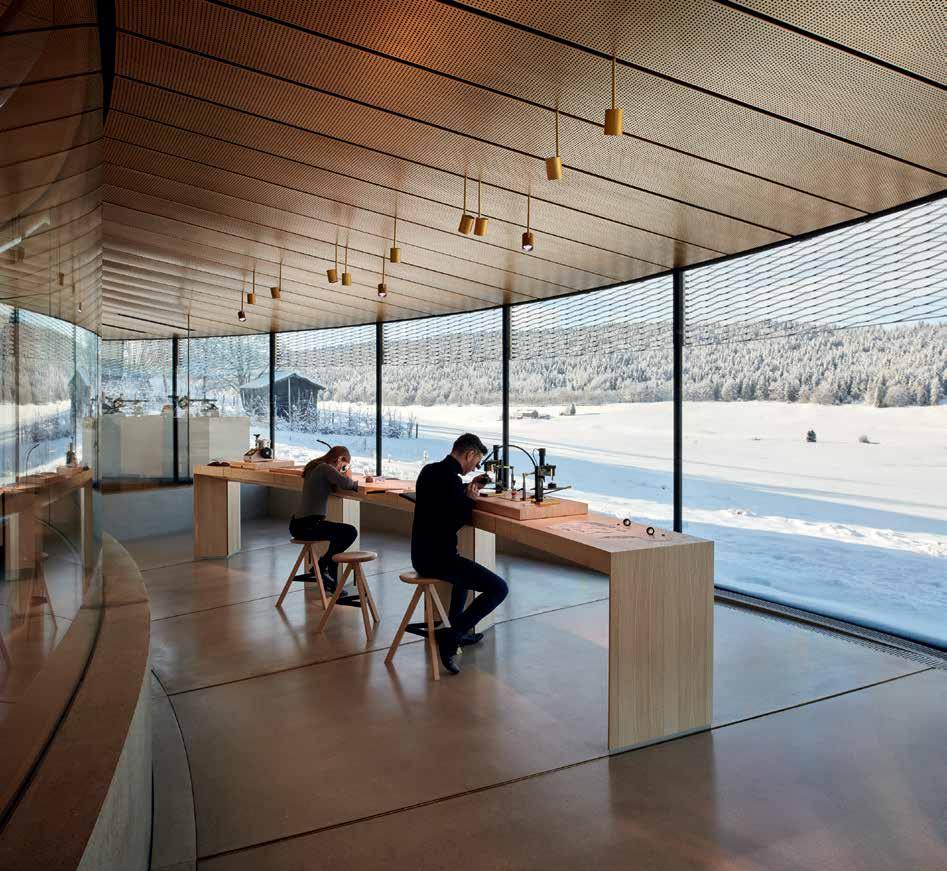

24 Credit: © Telegraph Media Group Limited 2020 AIR

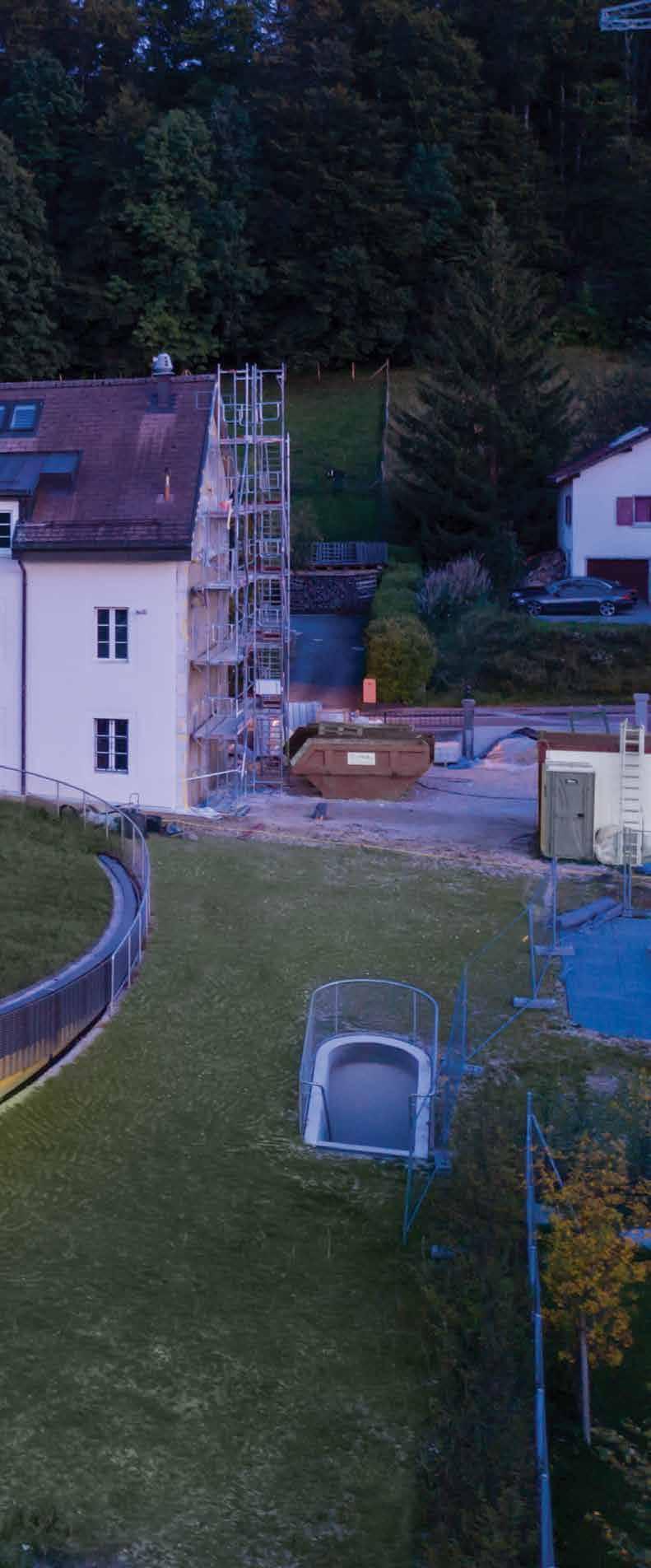
museum seems to grow out of the slope below the original building.
Entering the museum space, there are clever mechanical installations to demonstrate watchmaking, including an automaton by François Junod; a standing metal family tree (the interrelationships within the valley are byzantine); and a survey of the brand’s history, including a section on the Royal Oak, the 1972 sports-luxe design that’s still inspiring imitations today. It was decided to make the ateliers visible to visitors too, so they can see the work that Audemars does today. The museum also encompasses the old building, which has been restored and will form a counterpoint to the new.
Audemars is not the first watchmaker to open a museum (Patek Philippe opened its back in 2001), but the new building has an impact that extends beyond its function.
The museum is far more about what Audemars Piguet is now than what it was in the past. Although it makes watches in much the same way as its neighbours in the valley, such as Blancpain, Breguet and Jaeger-LeCoultre, it has a character entirely its own.
Jasmine Audemars, the greatgranddaughter of founder Jules, is the affable but very sharp chair of the board who led the decision making behind the project. As she put it, “We wanted a museum to illustrate the soul of AP. We have the founders’ house, which is traditional (and which you see from the street), so with the extension we wanted something contemporary, very forwardthinking, which is also part of AP.
“We decided to go ahead with the extension in 2014 so organised a competition, and, frankly, it was love at first sight. He [Bjarke Ingels of BIG] just got it: the shape; the glass so you can see the landscape through the building – we have our roots here in the Vallée de Joux, which is important. We knew it wouldn’t be easy though,” she said, referring to both the surrounding environment, which the brand is committed to preserving, and the challenges posed by the extreme climate.
Ingels said the design was inspired by the ‘intrinsic logic of the place’. For him, “Architecture is like portraiture: it’s for and about someone or something else; you try to capture the presence, character and potential of the subject.”
François-Henry Bennahmias, Audemars Piguet’s CEO, took up his role just after the project got the green light, and has been closely involved ever since (not least to coax tardy suppliers to deliver). He also believes the museum reflects not just the history and character of the brand but the way it is evolving.
“The museum adds to what we’re working on. It builds brand equity as we approach the 50th anniversary of the Royal Oak [in 2022] and the 150th anniversary of the brand in 2025, so it’s important for that, but I think it is our interpretation of what Jules Audemars would do today.
“As a brand, we’re all about the client, which is why we’ve gone from 540 agents in 2011 to around 120 by the end of next year. We want to close the gap between client and watchmaker, which is also why we’re moving to our off-street, ‘house’ concept [an example being the brand’s new London home on Bond Street] and it is why we have watchmakers in the museum.
“Once the hotel is open [Audemars is refitting the Hôtel des Horlogers in Le Brassus], we expect up to 7,500 visitors a year, triple what we see now.”
Although Bennahmias emphasises the importance of clients coming to visit, that’s only part of the strategy for Audemars Piguet. “We’ll still go out to the world. Le Brassus isn’t London, New York or Hong Kong, and we’ll do big events, and I mean big; this is who we are.”
There will also be more of Code 11.59, the watch that caused such sharply divided opinions over its looks last year, not least because half of those sold went to new clients mostly in the 25-35 age group. Against that, there’s something more academically pure coming, which is related to the museum. “We’re not done surprising you yet,” Bennahmias promises.
25
All images:
Musée Atelier Audemars Piguet, by Iwan Baan
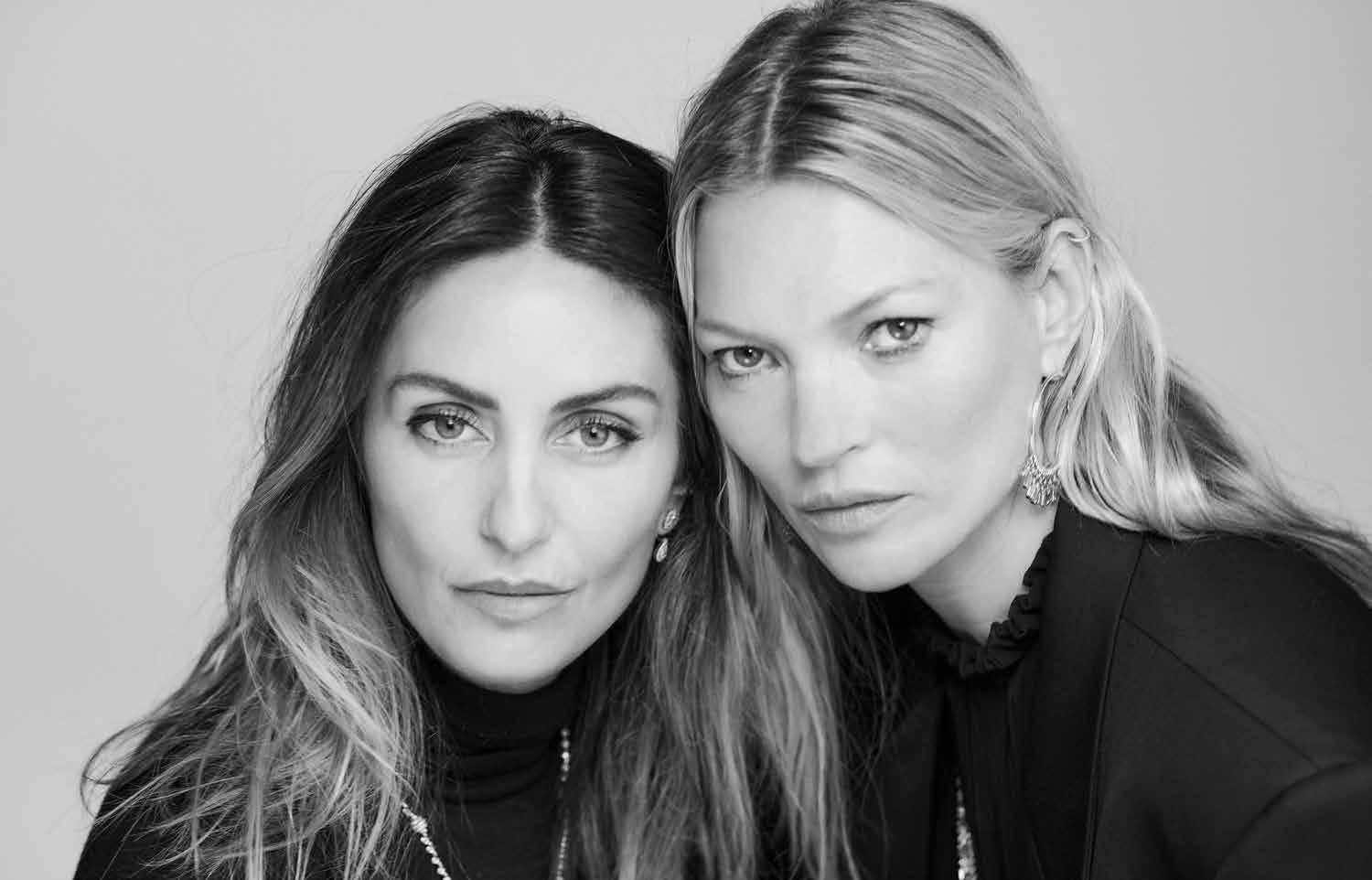
It Takes Two
Valérie Messika on working with Kate Moss to produce a thrillingly daring ten-part high-jewellery collection
WORDS: JOHN THATCHER
It’s often said that the best things come in pairs. The Chinese even have a name for it: seng hei lum mun, which translates to ‘double happiness arriving at your door’ and celebrates two joyous occasions occurring simultaneously. The origin of this millennia-held belief dates to the Tang dynasty, which ruled China from 618 and is considered a golden age on account of the country’s creative flowering during that period.
Today, another creative flowering, at the House of Messika Paris, has blossomed into a high jewellery collection made doubly delightful by the coming together of two style titans:
Valérie Messika and Kate Moss.
“It had to happen,” says Valérie of the collaboration, which sees the duo impart their singular personalities on a range of nearly 100 pieces (entitled Messika by Kate Moss) that beautifully illustrate flexibility and fluidity, something that also conveniently describes how, in the words of Valérie, the pair, “both
follow our natural instincts, as I love to call it. We don’t follow the rules and love to challenge ourselves.”
Creating close to 100 pieces can certainly be labelled a challenge, but it’s one both women embraced from the moment plans for their collaboration were first mooted by Valérie during a meeting at the Ritz Paris. “We had real fun on set for my previous collection, Lucky Move, [of which Kate Moss was one of the faces] and I think everything came naturally, as I have always dreamt to work with Kate on a special creation. I took a chance and asked her if she would like to co-design a high jewellery collection with me: she said yes straight away.”
It was at that same meeting that Valérie truly noted Kate’s fondness for jewellery.
“She was wearing a lot of jewellery, and I became curious to know the various stories behind her jewels,” says Valérie. “She had fun telling me about moments in her life through her jewellery – her memories,
AIR 26
Jewellery OCTOBER 2020 : ISSUE 109
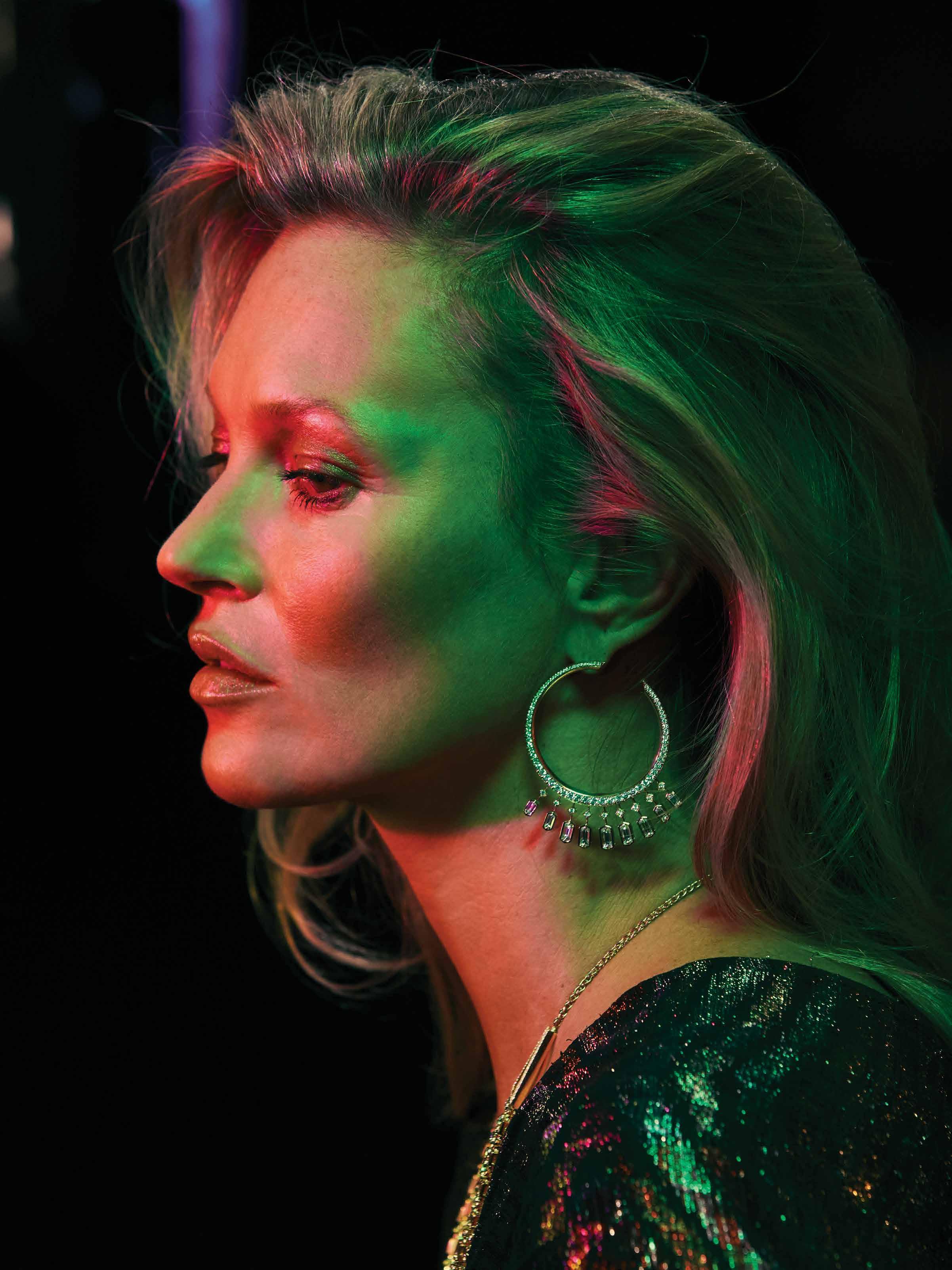
27
‘This is not my first collaboration but every time I thrive from the challenge and especially love to challenge myself ’
moments of difficulties, moments of happiness – and it was great listening to her as a jewellery storyteller. I discovered a bohemian spirit and unconditional admirer of jewellery. I learned her preferences for yellow gold, and emerald and baguettecut stones. I discovered a travel lover who is particularly drawn toward tastes for Indian culture; which has provided much of the inspiration for our collection.”
It’s not the first time Valérie has partnered with a supermodel muse to work on a collection – Gigi Hadid was the first – and it’s unlikely to be the last, with Valérie expressing her openness to future collaborations. Yet for someone who has otherwise worked independently on her creations since she launched Messika Paris back in 2005, surely there must be obstacles to overcome when sharing the creative responsibility? “I do find it challenging
to design alongside someone else, but not complicated,” she explains.
“It was an exciting creative challenge to entwine Kate’s personal tastes with the key codes of Messika Paris. This is not my first collaboration but every time I thrive from the challenge and especially love to challenge myself through new design.”
The collection was crafted over one full year (including many Zoom calls) and comprises ten sets. Yet the inspiration for the vast majority of the pieces can be traced to a single object – Kate’s jewellery box. “Everything started with it,” reveals Valérie.
“When Kate showed me the box I saw many styles across vintage jewels, ornate pieces from India, etc., which initially seemed far from the DNA of Messika Paris.”
However, the challenge readily accepted, Valérie infused the inspiration in myriad ways:

AIR 28
Opening pages, from left to right: Valérie and Kate by Chris Colls; Kate wears hoops and a necklace in behindthe-scenes shots, Nikolai Von Bismark for Messika, shot by Marin Laborde
Left: Valérie and Kate captured during the creative process, shot by Marin Laborde
Right: Kate wears spectacular pieces in behind-the-scenes shots, Nikolai Von Bismark for Messika, shot by Marin Laborde
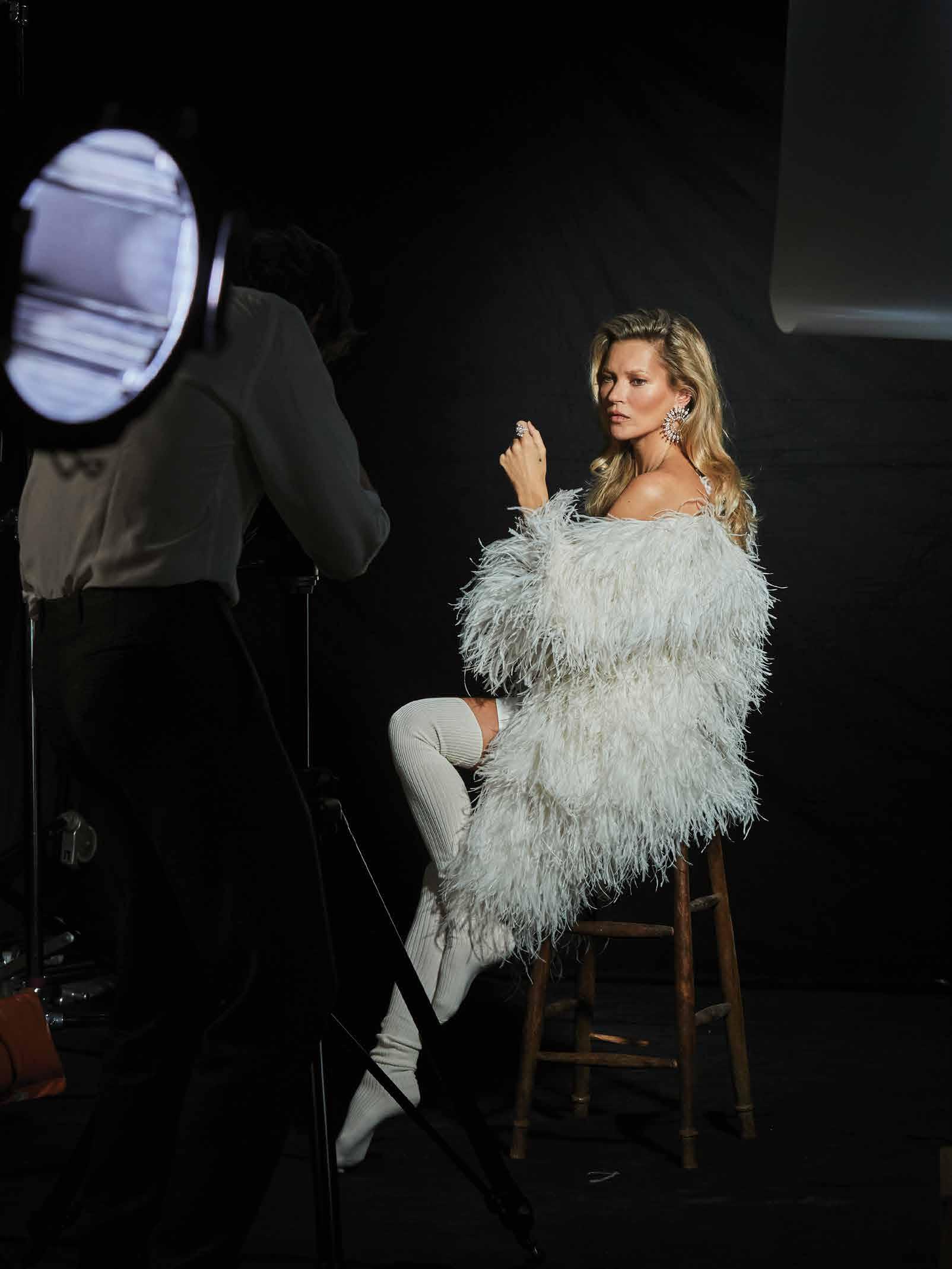
29
‘Kate had fun telling me about moments in her life through her jewellery – her memories, moments of difficulties, moments of happiness – and it was great listening to her’
“The colours, XXL motifs, large decorative head pieces across Aztec culture and Art Deco style.”
Was there a set that proved particularly testing to create? “One of the most challenging was the multichain set, particularly the necklace. The challenge was to create a piece that appears both effortless and slightly in disarray.”
It’s a good description of a contemporary piece which, as with the rest of the set – a personal favourite of Valérie’s and made up of earrings, a ring, nose jewellery, and an ear cuff – takes its design cues from Kate’s relaxed attitude and bohemian tastes.
It’s Kate’s favourite colours that take centre stage elsewhere in the collection, which sees Valérie deviate from her usual use of only diamonds and gold to produce a vibrantly-hued set, with malachite to the fore. “It is the first time I’ve used coloured stones, such as malachite or turquoise, on a high jewellery collection. Using these stones gives a bigger and more colourful visual impact,” reckons Valérie.
“Malachite felt like an obvious stone to select as Kate’s favourite colour is green and [she] is drawn to the combination with yellow gold. When I imagine these three colours (along with malachite, turquoise and mother of pearl also feature) set across Kate’s skin, I see fireworks bursting with colour.”
Did she learn anything new from working alongside a bona fide style icon? ”I noticed that she is quite particular, which was fun to see because I, too, am quite particular with jewellery design. I enjoyed seeing how curious and involved she was through every step of the creative process.”
The results represent an incredible feat, bringing together two minds, multiple tastes and influences and various techniques to create one coherent collection. Little wonder, then, that both women were so thrilled: “Kate was so excited, and so happy to see the final results,” says Valérie.
“It seemed like many emotions were felt in a matter of moments. We highfived! We were both incredibly proud of what we worked so hard to create together. A few moments after, she [Kate] began trying on the pieces. I was really pleased when she finally had the chance to feel the jewels.”
For multi-talented Valérie, who designs from first sketch through to final piece, that buzz is something that’s always there, whatever she creates. “Every time I am so happy to see the final results. My team and I spend so many months working on one piece, it is a lot of emotions when a sketch comes to life.”
Thrillingly inspired by twin talents, Messika by Kate Moss is tangible proof that the best things really do come in pairs.
AIR 30
Right: Kate wears a plastron necklace in behind-the-scenes shots, Nikolai Von Bismark for Messika, shot by Marin Laborde

31
OBJECTS OF DESIRE
Master craftsmanship, effortless style and timeless appeal; this month’s must-haves and collectibles
OBJECTS OF DESIRE
OBJECTS


Twenty years on from its launch, when its all-black look imbued the watchmaking world with the spirit of rebellion, the J12 was all-white for its next showing just three years later. Now black and white, dark and light, day and night are combined on the visually
striking Paradoxe. What appears to be a simplistic effort to combine the two tones is in fact a complex feat, the two parts of scratchresistant ceramic having to be precisely cut to avoid breaking the material and then fused to create one casing.
1
OF DESIRE
CHANEL
J12 PARADOXE

Having debuted in 1961, The Jackie – which adopted its moniker from jet-setting Jackie Kennedy, who was so frequently photographed with the bag on her travels – has been updated numerous times down the years, remaining a staple of the Gucci bag clan. Its latest iteration
walked the runway at both the men’s and women’s F/W shows, strutting a new pared down silhouette. Available in three different sizes – medium, small, and mini – the latter two offer the widest choice of colours, including neutral-coloured python.
2
OBJECTS OF DESIRE
GUCCI THE JACKIE 1961
OBJECTS
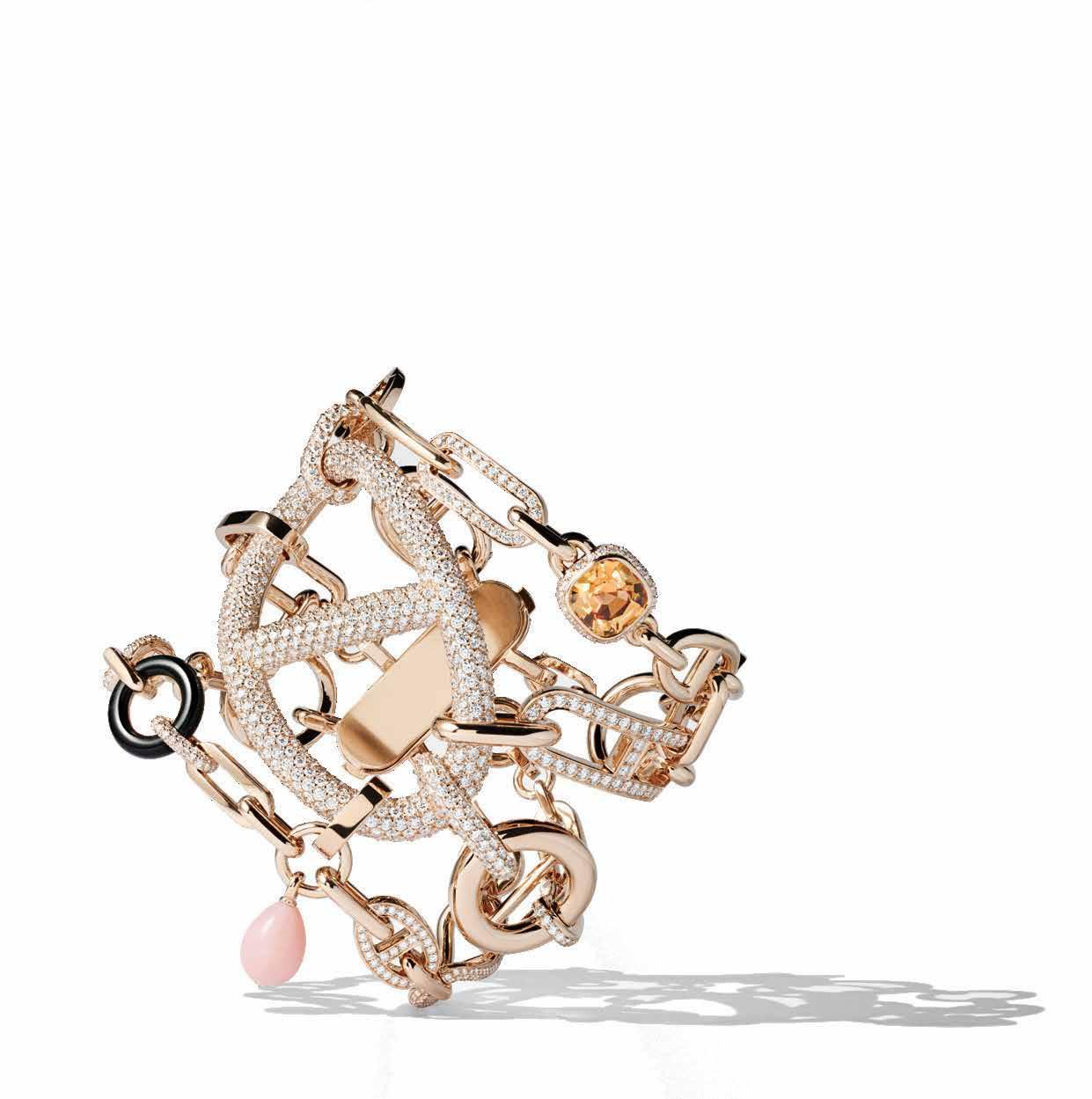
HERMÈS GRAND JETÉ BRACELET
As a harness-maker by birth, you may expect Hermès’ use of chains to express restraint through their design. Yet creative director Pierre Hardy’s 29-piece high jewellery collection, Enchaînements Libres, conveys a sense of absolute freedom. Nowhere is this
more apparent than on the Grand Jeté pieces – comprising a spectacular necklace and this eye-grabbing bracelet of rose gold, diamonds, pink opals, black jade, pearls, orange sapphire and topaz. All the pieces will be at Hermès’ Dubai Mall boutique from mid-October.
3
OF DESIRE
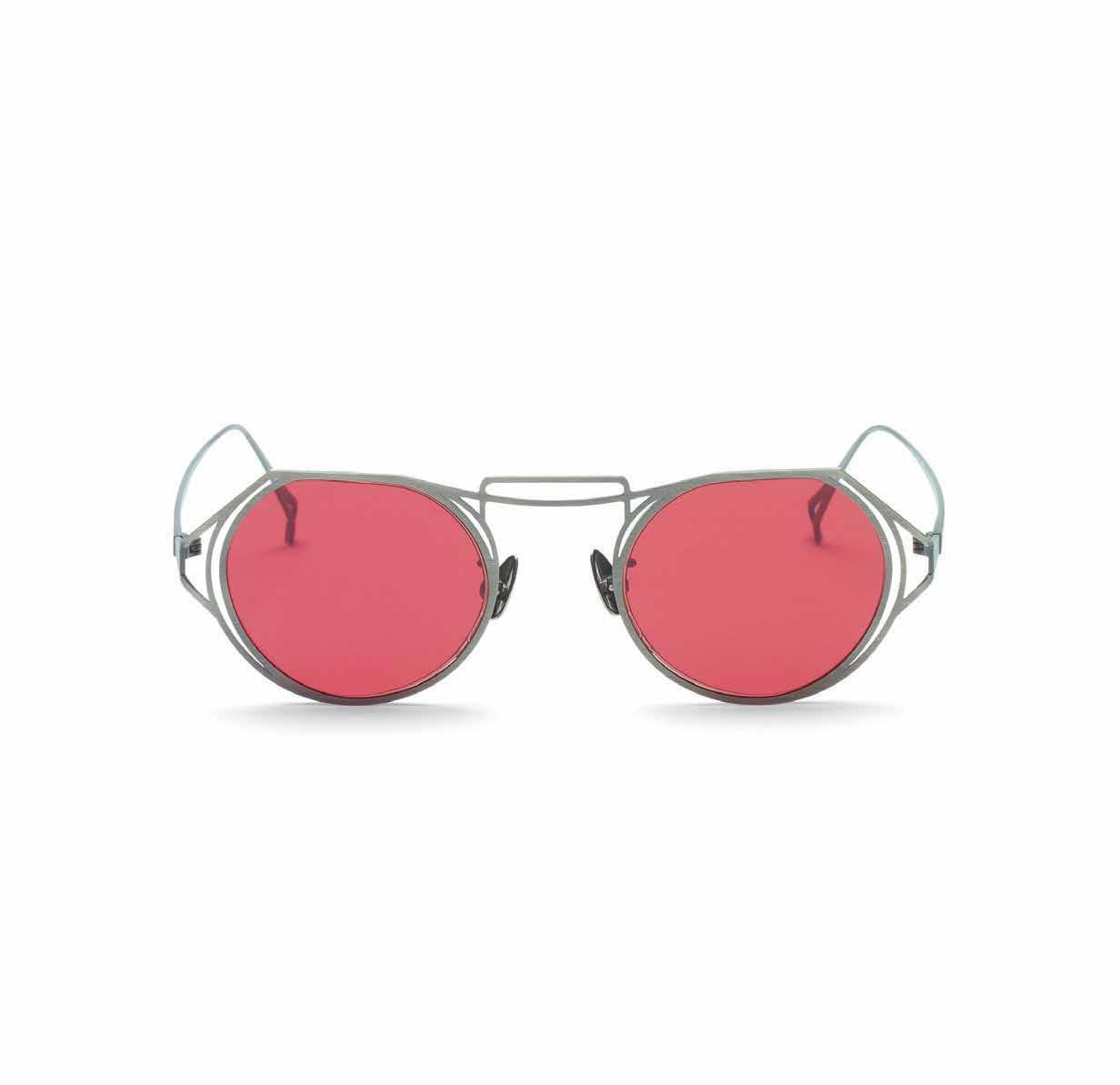

Hailing from Riyadh, Cones & Rods’ intelligent designs honour inspirational people of Arab origin who have made an indelible mark on our world. That’s certainly true of the late architect Zaha Hadid, whose iconic designs are referenced in this style, which is available in three colourways – black mirror, dusty/ yellow, and dusty/red – with frames crafted in Japan from 100% titanium. On a mission to facedown the environmental impact of fast fashion, Cones & Rods design only limitedpiece collections.
4 OBJECTS OF DESIRE
CONES & RODS
ZAHA


Celebrating the special bond we have with our beloved pets (when they’re not scratching the couch, that is) Valentino is offering the opportunity to personalise any new purchase of its Garavani Rockstud bag with an image of your prized pet. From mid-October, illustrator and artist Riccardo Cusimano will personally embellish the bag by hand, adding the owner’s initials and a joyful portrait of their chosen pet on purchases via valentino.com. Team yours with a matching Garavani Rockstud leash and dog collar.
5 OBJECTS OF DESIRE
VALENTINO GARAVANI ROCKSTUD PET

The adidas Originals Superstar sneaker debuted way back in 1969, yet it’s testament to its timeless style that the shoe does not need redesigning in any way as it steps into 2020. Instead, Prada brings to bear its respect for heritage and passion for sport on
the inherently modern sneaker. Offered in a trio of new colourways: monochrome black, white with black, and chrome silver with white, the full-grain leather Superstar carries the dual logos of Prada and adidas Originals, alongside the Made in Italy stamp.
6 OBJECTS OF DESIRE
PRADA FOR ADIDAS PRADA SUPERSTAR
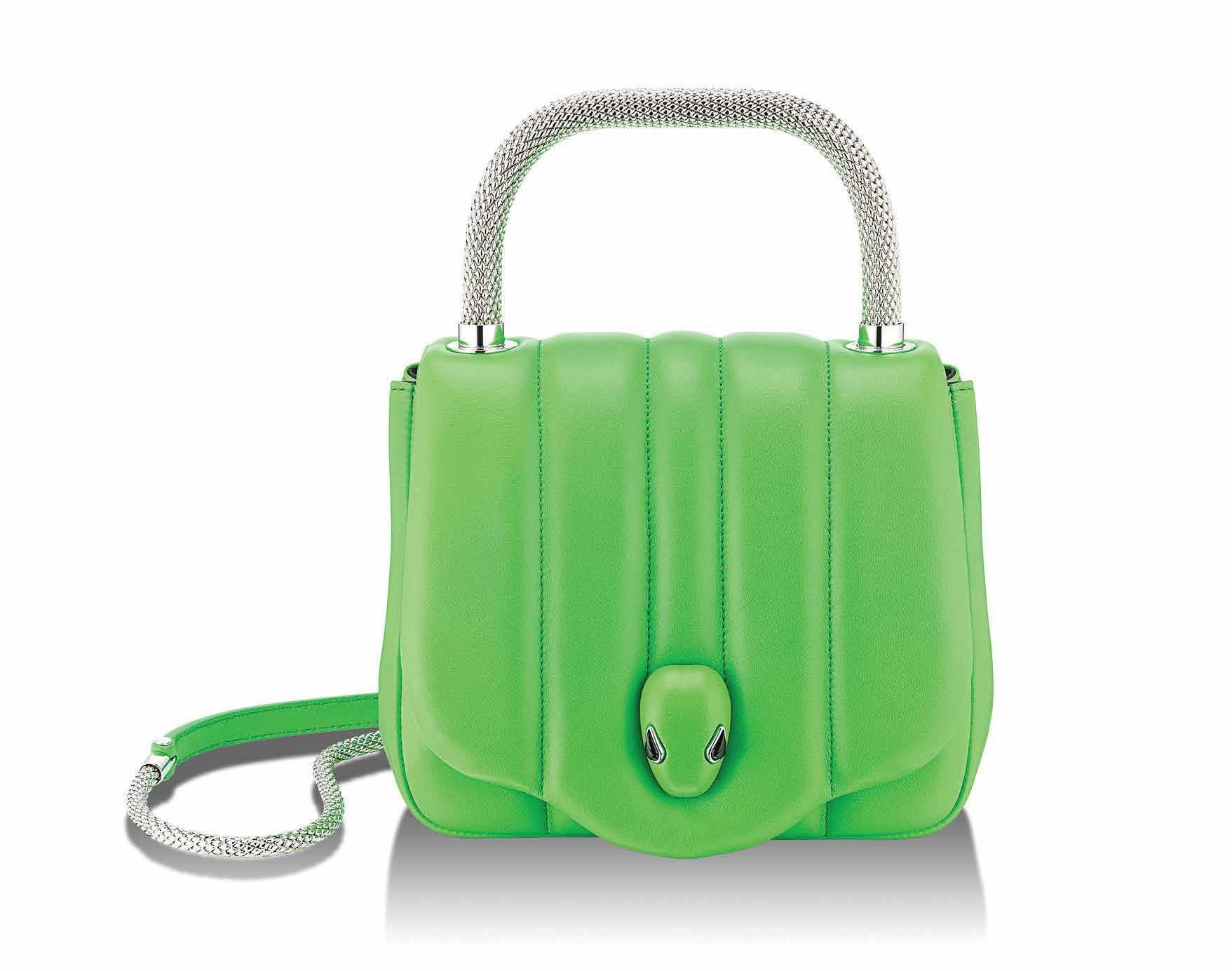
As part of a limited collection of handbags and accessories, Tokyo-based brand Ambush – co-founded by designer Yoon – adds its innovative design aesthetic on Bvlgari’s ever-stylish Serpenti Forever bag, visually loosening its silhouette for three
new shapes: a top-handle bag in quilted nappa leather; a heart-shaped minaudiere; and a multifunctional belt bag. At the heart of the design is Yoon’s interpretation of a snake’s natural beauty, hence the vibrancy of the colourways offered.
7
OBJECTS OF DESIRE
BVLGARI
AMBUSH X BVLGARI
OBJECTS OF DESIRE
OBJECTS OF DESIRE

The sleek façade of the F/W Antigona Soft contrasts with its impressive practicalitythe medium and large styles boast an ample central compartment and dual zip closures, an inner card pocket and removeable shoulder strap. Available in myriad finishes, including
classic black and pearl gray, it’s the for-thisseason-only finishes which caught our eye. They include this graphic houndstooth version, which echoes the brand’s ready-towear looks, and a version in extra supple calf leather embossed with a crocodile finish.
8
GIVENCHY ANTIGONA SOFT
OBJECTS OF DESIRE


AIR


35
Gal Gadot talks shedding tears and daredevil stunts as she reprises the role of Wonder Woman
INTERVIEW : LUCY ALLEN
‘ I can’t tell you what happened in the movie that made me cry’
People did many things during lockdown, from learning how to cultivate sourdough starter to starting (and just as swiftly ending) fitness regimes, needlessly buying gym equipment that’s now stored away to gather dust. Not so Gal Gadot. In an admirable attempt to lift people’s spirts, Gadot rallied her Hollywood chums – the likes of Kristen Wiig, Natalie Portman, Will Ferrell and Cara Delevingne – to sing a rendition of John Lennon’s philosophical classic Imagine. It’s fair to say she wouldn’t have imagined such a bitter backlash. Viewed over one million times on Instagram, the video drew scorn across social and traditional media, at best branded ‘out of touch’ and at worst ‘incredibly insensitive,’ as celebrities sang lines such as ‘imagine no possessions’ from their vast mansions. Inciting online derision is, of course, common terrain for celebrities, Gadot included. When she was first revealed as the actress to play the part of Wonder Woman, keyboard warriors from the comic book community were up in arms, declaring her ‘too skinny’ and ‘lacking the muscle necessary to successfully portray the character’. In response, Gadot had the perfect putdown: “Wonder Woman is Amazonian, and historically accurate Amazonian women actually had only one breast. So, if I’d really go ‘by the book’...it’d be problematic,” she told a journalist. Gadot is tough. Before the first instalment of Wonder Woman was released in 2017, she embarked on a gruelling six-month fitness routine which occupied six hours of everyday – two hours gym work, two hours fight choreography, and two hours horseback riding (the latter described as “super hard’). When cast as Wonder Woman in the superhero ensemble Batman v Superman: Dawn of Justice, Gadot was trained in swordsmanship, kung fu, kickboxing, capoeira and Brazilian Jiu-Jitsu, while prior to embarking on an acting career she served her requisite two years in the army as a combat trainer.
In this month’s follow up to Wonder Woman, Wonder Woman 1984 , Gadot is equally all action. “I do a lot [of the stunts and fight scenes]. I do have two stunt girls working with me because it is very extensive work and it’s extremely physical. But it’s like superhero, like we’re doing it for real. If we have to
choose, if it’s something that can be done [for real] or it can be CGI, we’ll go for the real version of it. But I do a lot of it. I get injured. We had wires, rigs for kilometres, so I can run at the same speed that Usain Bolt ran in the Olympics. So I was like, ‘Good for Usain Bolt. I mean, this is wow, what a great talent.’ But it was a lot of work and we’ve tried to make it our own, and do things that were never done before. That was really, really challenging for us in many different ways.”
It wasn’t the toughest part about reprising the role, however: “The toughest challenge is just balancing between work and personal life. This movie is so demanding and it’s such an ambitious movie and we shot it for eight months. At the same time both Patty [Jenkins, the film’s director] and I are mothers and we have family, so I guess that was probably my personal biggest challenge. Because the other challenges that we face with the movie are most of the time pleasant and encouraging.”
Less challenging was donning Wonder Woman’s golden armour suit for the first time in this sequel: “[It felt] amazing, amazing, amazing! There’s something about this suit that immediately puts you in character.”
It’s a character Gadot says she now fully embodies: “It’s part of who I am now. I can’t imagine my life without Wonder Woman. It’s been so intense and it’s been so powerful and had such an impact on my personal life that yeah, I can’t imagine my life without this character.”
Gal Gadot was born in 1985, the daughter of a father who worked as an engineer and a mother who made her way as a teacher. Prior to taking her first film role in the fourth instalment of The Fast and the Furiou s franchise, Gadot studied law and modelled, the latter on the back of being crowned a national beauty queen when aged eighteen.
Her interest in acting was sparked following an ultimately unsuccessful audition to be cast as a Bond girl in 2008’s Quantum of Solace, though her big break was swift in arriving when in 2009 she won the part of Gisele in what would be the first of four Fast & Furious sequels she would star in.
The big-ticket prize of Wonder Woman came in 2016, a character she has since played across the Marvel universe. “I try to keep focussed on my character’s journey,” Gadot says of having to play
36
AIR

37
‘ I’s had such an impact on my personal life that I can’t imagine my life without this character’
Diana Prince and her alter ego Wonder Woman across multiple films and storylines. “Obviously on the Wonder Woman films this is all about her and when I’m doing those ensemble movies it’s a bit different, it’s about the team. But I’ve got to say that I feel super grateful that we got the opportunity and we get the opportunity once again with this film to have this incredible platform that the fans care about, and to tell a story with a character that we love so much and we care about. It makes this movie meaningful and important and hopefully impactful.”
Caring deeply for her character saw Gadot shed tears when she watched one of the film’s first cuts. “Yes, and I’m not an easy crier! I had such a strong reaction to this movie and it caught me off guard.” Though as to what caused the tears to flow, she’s remaining tight-lipped: “I can’t tell you what happened in the movie that made me cry, I can just say it was the very beginning. All of a sudden I wasn’t Gal, Wonder Woman, the actress, the producer [Gadot is also a producer of the movie] who was on set and there when everything was shot, I was that little girl from a suburb in Israel watching over myself in the cinema, which is in itself a surreal experience, watching this thing and seeing this amazing woman doing these amazing things. And I did not expect that. On the set, I didn’t even notice. It was very effective and that’s the moment where it’s like, ‘This is why it’s so fri-ckin’ important. This is why it’s not like any other movie.’ We’re doing something that we hope is going to have an impact but it’s very impactful on us already. So touch wood, it’s a good sign, and I hope the audience will have a similar reaction.” And what can the audience expect to see? “I feel like we got to establish Wonder Woman on the first movie and it was the ‘coming-of-age’ type of story and finally in this one we get to explore who Diana is, where she is, what she struggles with, and take it to the next level.,” says Gadot.
Can she tell us any tales from the set? “Wow, there’s plenty. So, one of them, we wanted to cast Kristen [Wiig] from the-get-go. We are huge fans of hers, she’s just super-talented and amazing and a great person. And because Patty [Jenkins] and I are so close, I used to tease Patty and I said, ‘So now that Kristen’s going to come, is she going to become your new best friend?’ And then we started to riff moments of her and Kristen as if they talk and I come in and I try to be a part of it. [laughs] No, but honestly, we had so many great moments. Kristen and I ended up being amazing, incredible friends. But every time between takes, Kristen and I would go to the side and we’d shoot something goofy. We have a band now, we have music videos that we’ve edited. We sing, like this is real. We’re going to release it when the movie comes out. But let me just say, as much as it was hard to shoot the movie – it was a lot of fun.” Was it obvious from reading the script that this was going to be a fun film to make, or were there some parts which you read with a little trepidation? “I think that, for actors, there’s always between one to three scenes where they know, ‘Okay, this is the goal. This is where the money is. This is the most important moments for my character.’ So those were the moments that I was really looking forward to shoot. And the, ‘Oh my God, I can’t believe I have to do that’ [moments] would probably be the physical things because [Patty is] one of my very best, closest friends and it’s hard for me to say ‘No’ to her. Also, she has a great will, so I’ll find myself trying to negotiate my stance with Patty and she’d be like, ‘Yeah, yeah yeah, I see what you’re saying, I know. But don’t you think it’s going to be it’s so much better if…’ Those were the moments where I was like, ‘Ah, the physical moments’ because it is hard and I have found myself with many different spine injuries because of shooting this movie. But, at the same time it’s worth it. And watching the movie now a few times, I’m so happy with the way we did it.”


38
AIR Credit: Lucy Allen / The Interview People


39

In a year that would have seen River Phoenix turn 50, Louis Chilton considers his cinematic legacy
AIR 40


41
River Phoenix may have been destined to be a great actor, but he didn’t necessarily see it that way. When he first started in showbusiness – as a child of clearly precocious talent – his goal was to make it as a musician. He would enjoy a modest amount of success in that sphere with his band Aleka’s Attic, bolstered by the fame Hollywood brought him. To pretty much everyone else, however, it was clear his fate lay in the flicker and awe of a cinema screen. This year would have been Phoenix’s 50th birthday had he not died, tragically and publicly, before reaching even half that age. A death like Phoenix’s can be all-consuming; ugly sensationalism in the immediate aftermath has given way to a kind of shallow mythologisation. But the story of Phoenix’s death does not contain the story of his life. His work survives to speak for itself: there’s a reason that every young male actor from Leonardo DiCaprio to Heath Ledger has been held up to Phoenix’s gold standard. In a career that barely lasted a decade, he had inhabited a small handful of roles that touched countless people, and for generations to come. Phoenix grew up without a formal education. He was born in 1970 into an unconventional family of pseudohippies, who joined a cult in South America when he was just three years old. Leaving the cult (The Children of God, a highly controversial outpost of supposed Christians that was labelled a sect by the FBI) at the end of the decade, the Bottom family moved back to the US and, in a poetic statement of intent, renamed themselves Phoenix. They ended up in LA, where Phoenix and his siblings were spotted by talent agent Iris Burton while busking on a street corner. He would come to express unease with the work this initially brought – TV advertisements for products like Ocean
‘ [He was] this raw, emotional open wound all the time. He felt everything. It’s what made him such a wonderful actor’
Spray cranberry juice – saying he had fallen into commercials for “financial reasons”. However, the commercials made acting in film and TV shows seem like an “attractive concept” and, at the age of 12, he landed his first TV gig as a regular on the short-lived reboot of Seven Brides for Seven Brothers Phoenix’s first film role came in Explorers, an affably far-fetched sci-fi romp, opposite a young Ethan Hawke, who recounted how his co-star was “a serious young artist, even at 14”. Phoenix planned his characterisation to the smallest detail. “We’re doing this movie about kids going on a spaceship,” said Hawke, “and he’s trying to talk about what’s in his character’s pockets. You knew right away he was special.”
Phoenix drew no small amount of acclaim during his time as a young actor, but nothing compared to his breakout role as troubled child Chris Chambers in the 1986 Stephen King adaptation Stand by Me. Chambers was a character who hid his pain behind coolness and bravura and Phoenix was tremendous as he finally breaks down; the rest of the roundly great cast were acted off the screen by the display of raw, complicated emotion. But the role clearly took its toll. The actor would later say: “I identified so much with the role of Chris Chambers that if I hadn’t had my family to go back to after the shoot, I’d have probably had to see a psychiatrist.”
In his best work, River Phoenix revealed
vulnerability and dysfunction quietly, with a deeply affecting naturalism. His was a distinctly modern style of acting, less mannered than most of his forebears, such as James Dean, to whom he would often be posthumously compared. But that’s not to say he lacked discipline or dedication to the craft. Kiefer Sutherland, who played Stand By Me’s villain, remarked that Phoenix “was the one who would call you every night and go ‘do you mind running over lines for this scene?’”. Over the course of his short career, Phoenix worked with a list of directors that would be the envy of many industry veterans, among them Peter Weir, Sidney Lumet, Steven Spielberg, Peter Bogdanovich and Rob Reiner. He would share the screen with some of the biggest actors of the 20th century, including Sidney Poitier, Robert Redford and Harrison Ford, stealing scenes from many of them. When Phoenix was cast in 1989’s Indiana Jones and the Last Crusade – as a younger version of Ford’s whip-cracking hero, no less – he was well on his way to becoming a household name. Such was his profile that Phoenix’s role was kept totally hush-hush; Young Indy was referred to in the script simply as “Boy on Train”. Once word of his involvement leaked, LucasFilm circulated a rumour that Phoenix was in fact playing the brother of Ford’s character. He won the admiration of many a big actor, too. John Baxter’s biography of Steven Spielberg suggests that during production of The Last Crusade, Phoenix was “warned never to imitate Ford’s mannerisms on screen”, a wise move, as divisive Solo star Alden Ehrenreich might attest. Baxter also claims that Phoenix was discouraged from suggesting “he had any interest in taking over the Indy role”, in order to “allay Ford’s fears that Phoenix might steal the movie”. These claims don’t chime with Ford’s public support
AIR 42
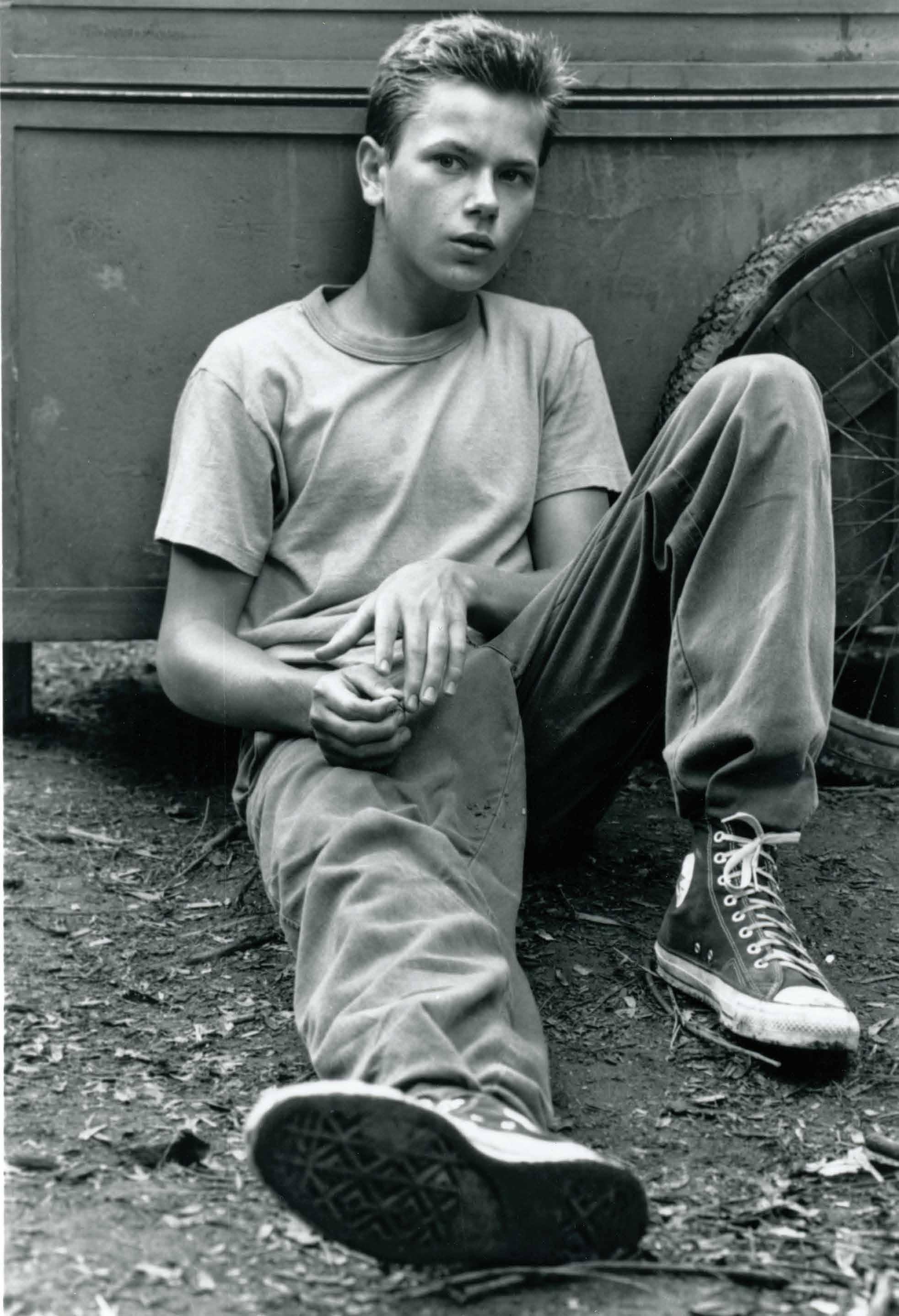
43
of Phoenix, however. The Star Wars star reportedly suggested him for the role in the first place, having worked with him previously in 1986’s The Mosquito Coast. After Phoenix’s death, when Hollywood was still in a state of shock, Ford was one of the first to pay tribute. “He played my son once,” he said, “and I came to love him like a son, and was proud to watch him grow into a man of such talent and integrity and compassion.”
By the early 1990s, Phoenix was producing some of his finest work, as a young marine in Nancy Savoca’s 1991 film Dogfight, and as a narcoleptic sex worker in Gus Van Sant’s My Own Private Idaho that same year. The latter of these films proved a watershed moment for Phoenix, and the film a classic. Phoenix’s role was more than just acting; he was instrumental in shaping the character, and was largely responsible for the lauded campfire scene, in which his character confesses his unrequited love for his companion, “He was sort of like a Kennedy,” said Van Sant, while giving a talk on the movie in 2016. Like JFK, Phoenix was involved and proactive. “If he saw some trouble, he would get involved in the middle of it, and try and negotiate or try and help the situation. I think he was very excited that he could control the destiny of his character.”
Phoenix was no method actor, but he spent untold time researching his roles. His preparation for My Own Private Idaho involved hours of interviews.
Co-star Udo Kier recalled a time when Phoenix coaxed him into some with local gigolos while he covertly listened in. “River was sitting in a corner with
his sunglasses and his beautiful hair, just listening. I was interviewing the boy and of course I had experience, so it wasn’t difficult for me to ask: what was the worst thing he’d ever had to do? River needed it for his performance. He needed to know about this. For somebody to go that far... it was amazing.”
Not only was Phoenix a talented craftsman, he was a teen idol whose good looks and sensitive, vaguely spiritual persona made him a perfect magnet for fandom. That sensitivity wasn’t an affectation: his Stand by Me co-star Wil Wheaton described him as “this raw, emotional open wound all the time. He felt everything. It’s what made him such a wonderful actor.”
Weir, who directed Phoenix in The Mosquito Coast, said: “He was obviously going to be a movie star. People who know film – me, Harrison [Ford], my wife – could see that River had something else. It’s something apart from acting ability. Laurence Olivier never had what River had.”
His output in the two years after My Own Private Idaho included the 1992 comedy Sneakers, which placed Phoenix alongside Redford, Ben Kingsley and Poitier (for the second time), and the poorly received The Thing Called Love If the pressures of fame were starting to impact Phoenix’s wellbeing, he didn’t let it show: the picture painted by Sneakers’ director Phil Alden Robinson is one of professional diligence. “Phoenix cared deeply about his craft,” he later said. “He loved to take chances. He loved to dig deeper and push harder.”
When Phoenix died, of a drug overdose
Opening pages and right: Stills from My Own Private Idaho Previous page: Still from Mosquito Coast
outside a Hollywood nightclub on 31 October 1993, the media was quick to fixate onto the lurid details. The fact that he had been able to shield his addictions from the public eye only made the disclosure more shocking; even now, his sad and public end sometimes tends to colour his legacy on the screen.
But not always. The most potent tragedies are the ones Phoenix himself created, seen in the characters whose lives he imbued with such soulful torment. He rises above the ranks of the Hollywood might-have-beens because we could see exactly what he already was; even as a teenager, he shone with not just talent but application, that rare accomplished power that comes only with the Hollywood greats.
At this year’s Oscars, when Joaquin Phoenix was collecting his Best Actor statuette for Joker, he fought back tears as he said: “When he was 17, my brother wrote this lyric. He said: ‘Run to the rescue with love, and peace will follow.’” Phoenix’s former bandmate Josh Greenbaum later told Rolling Stone that the full song, likely called “Halo”, was composed before Aleka’s Attic were formed. There is a “slim outside chance” that the song survives on an old cassette tape, piled among many in Greenbaum’s possession, but, he admitted, “even if it exists, I don’t know if it would play”.
Halo is a song we may never get to hear, one small misfortune among myriad dismal others. But it is not forgotten – and neither are his onscreen performances, a small but solid body of work that touched on the bittersweet truth of what it means to be young, and struggling. Credit: The Independent/The
44 AIR
Interview People

‘ In his best work, River Phoenix revealed vulnerability and dysfunction quietly, with a deeply affecting naturalism’
45
Super

Whytheoriginal1990ssupermodelsstillstandtall
Every person in attendance at the Balmain show in February whipped out their smartphone as Helena Christensen, 51, took to the catwalk. The rare sight of a bona fide supermodel returning to her natural habitat prompts one of two reactions from even the most poised of fashion editor audiences – stunned silence or riotous applause. Always, these days, it’s an ‘I-must-get-a-picture-of-this’ moment.
The last time the bulk of the original, mononymous ‘Supers’ –Naomi, Cindy, Claudia, Helena, Christy – were photographed in the same room together (only Christy was missing) was at the Versace spring/ summer 2018 show, creating an image so powerful, it received a standing ovation, went viral and secured money-can’t-buy exposure for the brand. Have they still got it? For these women, it never went away.
Since the advent of fashion photography in the 1930s, when unnamed models first replaced illustrations on the cover of Vogue, modelling had been considered more like a performance-led sport than a strategy-led business. Its star players tended to bow out at around the age of 28, when their physique was considered ‘past it’. The fashion industry relentlessly championed the young – ‘hot new faces’ were scouted as pre-teens, names would launch, dazzle for a few seasons, and then
fizzle into obscurity. There was little work for an ageing model, no matter how in demand they had been at their peak.
Until recently that is. Beauty is still every supermodel’s raison d’être. But the industry view on what counts as beautiful, and who is therefore employable, no longer excludes those who don’t boast wrinkle-free faces and prepubescent measurements. Personality is king, and age-diversity is now valued by brands that are increasingly waking up to the fact that women of all ages buy their products.
Many older models have, in the last decade, been able to spin their dismissals as career ‘hiatuses’. It is, however, the ageing of the
AIR 52
WORDS: CAROLINE LEAPER


53
original 1990s supermodels that has perhaps secured the new standard and prompted a more permanent change. The ‘girls’ now hitting their 50s represent the first generation of models who have worked non-stop for three decades, with no plans to retire.
‘We’ve seen a marked change in the last few years against the “perfect”, thin, young, airbrushed model, towards something that is closer to reality,’ says Natalie Robehmed, market analyst and former editor of Forbes’ annual wealthiest models list. ‘A lot of brands are embracing it. It’s coming from consumers who want to see their reality reflected in advertising, and from Instagram, which has democratised modelling for people who would have once not met model agency standards, yet who now have huge followings.’
Naomi turned 50 in lockdown on 22 May and celebrated virtually with her nine million Instagram followers, before announcing a new beauty campaign with Pat McGrath Labs and sharing previously unseen pictures from her latest Valentino shoot, in which she wears only a handbag.
It is Claudia Schiffer’s 50th birthday later this month, which, she tells me, she intends to mark with close friends and family at her home in Oxfordshire. ‘I think age should be celebrated and revered,’ she says. ‘I am so happy to be turning 50 and have never felt more confident or happy in my life. I don’t try to look or feel younger, I embrace now.’
Cindy Crawford, 54, gets offers as impressive as those pitched to her 18-year-old model daughter, Kaia Gerber. Helena Christensen, Linda Evangelista, 55, and Christy Turlington Burns, 51, are all in high demand for magazine covers and interviews. All spin several plates – designers, beauty entrepreneurs, photographers, film directors – but all still model, occupying the advertising market, and taking turns as often as they fancy on the catwalk.
Supermodel mania first peaked at the turn of the 1990s as fashion shows and ad campaign images became a part of pop culture. The then-rising star models became global celebrities; they were big characters
‘ To this day, when Naomi turns the corner and comes out on a runway, boom! You feel electricity’

with signature walks, commanding pay cheques to match their status. They advocated glamour at all times, quaffing champagne backstage before shows and attending exclusive redcarpet events at night. They appeared in movies and music videos, and dated actors and musicians. The Supers were no longer just faces for magazine covers, they had voices and were interviewed for the inside pages, too.
‘The supermodels were created in an era when fashion was larger than life,’ considers Derek Blasberg, head of fashion at YouTube and a journalist who has been friends with Naomi, Christy and Cindy for over a decade. ‘Who cared about actresses? The Supers were glamorous, gorgeous, over-the-top, fabulous. I look back on the pictures of the Trinity [Naomi, Linda and Christy] at the Versace shows in the 1990s and ask, “How could you not be obsessed with this?”’
Linda was only half-joking when, in 1990, she famously said ‘we don’t wake up for less than $10,000 a day’. Naomi’s former agent Carole White would later say it was more like £300,000 a job. The ‘money girls’ amassed fortunes and forged partnerships with the biggest fashion and beauty brands – Chanel and Revlon – but also Pepsi.
‘Forbes did its first-ever celebrity 100 list in 1999 and on it there were five models: Claudia Schiffer, Cindy Crawford, Christy Turlington, Niki Taylor and Kate Moss,’ explains Robehmed of how model earnings boomed. ‘Over the years some of those people dropped off, but some are still making big money. People like Naomi became iconic – she can speak to people across generations and she has a different kind of star power.’
Before it had really occurred to editors that they could endlessly
Photoshop a woman’s image, before social media and photo filters, or scripted-reality television shows, the supermodels exuded real, in-person beauty. Fashion shows were not shared all over the internet within seconds, they were savoured for months in newspapers and magazines.
The fans, Claudia remembers, were as enthusiastic as any who would have pledged allegiance to the Backstreet Boys at the time. ‘It was insane,’ she says. ‘Like being a rock star. You couldn’t get to your car. We had security at every fashion show – even employed to guard my underwear! When I was out on the runway I’d come back and my underwear would constantly be gone.’‘’
Part of the appeal of the Supers was that they came as a gang. While they operated as individuals, they were also friends. Claudia was synonymous with Guess Jeans and Chanel, while Naomi was with Azzedine Alaïa and Yves Saint Laurent, and Christy with Calvin Klein. But they might equally be found doing group shoots for Vogue, joining forces for a Versace campaign or starring together in George Michael’s Freedom video. The unity made them at once likeable and untouchable – in terms of market domination (Kate Moss, 46, later managed to break into the pack) but also in the sense that brands, directors and photographers respected their collective power.
‘The group of girls I started modelling with and continue to over the years are unique in their physicality and mentality. Everyone came from different backgrounds and everyone worked really hard,’ considers Helena of the way each managed to find their own place in the industry. ‘We also are a ver y tight-knit and supportive group of girls, with each other and with our families.’
Claudia agrees with the sentiment. ‘We were on the cover of every magazine and in every campaign. We lived and breathed it and we developed unprecedented control over our careers. Although we could be competitive, there was a lot of camaraderie between us too. We looked out for each other and we weren’t afraid to speak up. If
AIR 54

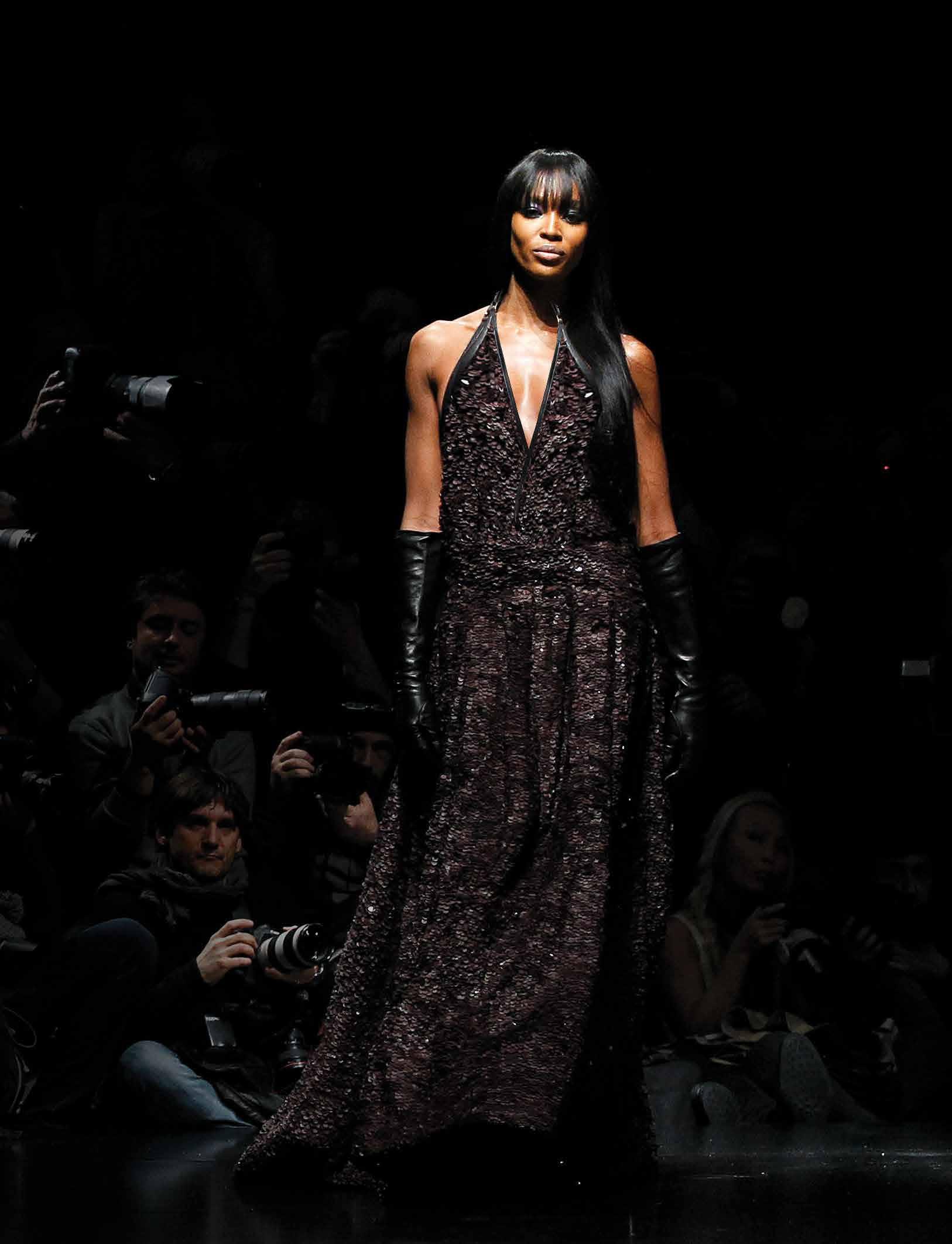
55
somebody had a bad experience, we would call everyone and say, “By the way, this just happened.” We thought, “We have the power all together and we should use it, because this is wrong.” We made things change.’
As well as continuing to model over three decades, the Supers have continuously expanded and diversified their portfolios as businesswomen. Long before ‘influencers’ endorsed their own ranges on Instagram, they were experts at selling. Some ventures were less than successful (remember the ill-fated Fashion Café chain of 1995?). But others flew – such as Kate Moss’s ranges for Topshop in 2007 and Helena’s co-founding of the stillsuccessful Nylon magazine in 1999.
‘I don’t think any of us even considered the stigmas surrounding the business regarding longevity or staying power,’ says Helena, who also co-owns the fragrance company StrangeLove NYC, as well as the swimwear brand Staerk & Christensen. ‘We just found ways to evolve, explore and expand our minds and lives, with families and other job opportunities that might have sprung from our careers.’
The Supers have always been masters of their own PR. When the social-media era arrived in the early 2010s, it bore a new generation of ‘Insta girls’ – Gigi Hadid, Kendall Jenner, Karlie Kloss. These were models with digital personas, negotiating even bigger pay cheques thanks to having their own readymade audiences to post ads to. Their arrival changed the rules, filling the market with new personalities. Some 1990s names bowed out, but the biggest stars adapted to the change and seized the opportunity to amplify their own personal brands.
‘It’s impossible to talk about models and what’s happened in the last 30 years without talking about Instagram,’ says Robehmed. ‘Often
when we think of supermodels we think of them walking the runway, but that’s not actually where the money is for them. The biggest money-making campaigns now are the huge deals that are across print advertising, video and social media.’
Claudia lists current modelling, design and curation projects with Etre Cécile and Bordallo Pinheiro, in addition to being the face of Chanel’s new J12 watch. ‘I’ve never worried about being relevant,’ she says. ‘Nor have I been one that craved the limelight or to be the centre of attention and my husband is very similar. I love what I do, but I value my privacy and I’m in a very fortunate position to be able to concentrate on collaborations I’m passionate about. Fundamentally the industry is the same, it’s just grown enormously,’ she continues. ‘There are more collections, the pace is faster and social media has had a huge impact. It’s been great for marketing fashion and beauty products, as well as providing a very effective way to manage your own exposure, which you see particularly with the big models of today. What was great in the ’90s though was not to feel the pressure to share everything with everybody; you could still have a private life and create a mystique. I miss that clear line of the public figure versus the private one, however I do love sharing fashion moments of my life on Instagram.’ Last spring, Blasberg convinced Naomi to launch a YouTube channel, giving her the opportunity to put her own message out there and share glimpses of her unique, highly entertaining lifestyle with her fans. From her trolley dash at Whole Foods, to her ‘airport routine’ video, in which she thoroughly Dettol’d her first-class plane seat before take-off, her dry sense of humour has endeared her to new audiences,
Opening page: Claudia Schiffer, Carla Bruni, Naomi Campbell, Cindy Crawford and Helena Christensen at Versace Spring/Summer 2018 show
Previous pages: Naomi Campbell at Roberto Cavalli’s 2012 Autumn/Winter show
Right: Christy Turlington walks the runway for Marc Jacobs at New York Fashion Week 2019
clocking up over 10 million views.
‘Of course, Naomi has had other offers to open her life,’ says Blasberg. ‘But I think what appealed to her about YouTube was the ability to be in control. She is her own producer, director, editor. She decides what to post and when to post it. I reckon Naomi has always wanted to be a TV host but, being a supermodel and all, she’s never been in one place long enough. Until the Covid-19 crisis. For three weeks in April, she did a daily live show from her New York apartment. I should mention: Naomi was on time to every single live show.’
As much as people love to see new content created by the original Supers, there is also fresh appetite to look back at ‘major moments’ from the past. Instagram fan accounts, like @The90sSupermodels, with hundreds of thousands of followers, are like shrines to those 1990s Versace catwalk appearances and now-vintage covers.
It helps, of course, that the Supers have aged gloriously. The legendary parties and champagne breakfasts have long since been replaced by expensive wellness movements – in keeping, really, with fashion’s overall switch to a cleaner image. Ask any supermodel their beauty secrets and they’d say they exercise every day, apply organic creams religiously (Schiffer’s choice is Bamford) and drink lots of water. But they’d also say that it’s about attitude, not age.
‘These women still suck the air out of the room,’ says Blasberg, a self-confessed, eternal superfan. ‘Christy Turlington is still the most beautiful woman in whatever room she’s in. Today, they’re still beloved because fashion loves reinvention and nostalgia, not to mention these women still look incredible. To this day, when Naomi turns the corner and comes out on a runway, boom! You feel electricity.’
AIR 56
Credit: © Telegraph Media Group Limited 2020

‘ Christy Turlington is still the most beautiful woman in whatever room she’s in’
57

The Midas Touch
Having torn up the rulebook to design the McLaren F1, Gordon Murray does so again with a multi-million-dollar supercar he’s billing as better by far
Motoring OCTOBER 2020: ISSUE 109
58 AIR

59
Not content to have his name forever linked to the design of just the one truly iconic road-going supercar, Gordon Murray has returned with what he’s billed as the “logical successor” to his legendary McLaren F1 – The T.50, engineered to be the purest, lightest, most driver-centric supercar ever.
It’s a car Professor Murray CBE rates as superior to the McLaren F1 “in every conceivable way”, which includes its price tag: £2.36m (before taxes), for what is one of only 100. Like the McLaren, however, it’s a car designed to still look fresh in the future. “Nextlevel aerodynamics allow us to avoid the current supercar trend for exaggerated wings, vents and ducts. I was determined to create a clean and pure shape that would remain timeless, ensuring the T.50 will still look fresh in 30 years.”
Arguably the most dominant characteristic of the T.50’s design is its purity – its exterior showing Murray’s preference for simple, clean lines and surfaces. Not that the car is completely drama free – remotely-released dihedral doors rise up and forwards, creating a striking visual impact. These doors are joined by a pair of glass-topped gullwing rear openings that hinge along the spine of the T.50 to reveal the V12 powertrain, while running alongside the engine bay on either side of the car are a pair of 90-litre vertical-load luggage compartments.
Luggage space may seem an odd consideration in a supercar, but for Murray, this is not a supercar to simply admire, but to use: “Comfortable, refined, spacious and easy to drive –not a typical description for a supercar with the capabilities, power or driver focus of the T.50. I’ve designed this car to be used every day, with almost 300 litres of luggage and storage space, a premium stereo, and excellent air conditioning. From its exceptional visibility and compact footprint to ease of ingress and egress, the T.50 rewrites the supercar rule book for usability.”
Aiding the car’s clean design are aerodynamics which on the T.50 are taken to entirely new levels for a road car; Murray rewriting the rule book to significantly enhance the supercar’s ground-effect capabilities. To achieve
unmatched aerodynamic performance, the car’s rear-mounted 400mm fan rapidly accelerates air passing under the car, forcing it through active boundarylayer control ducts that form part of the rear diffuser. This same fan-assisted aerodynamic enhancement was first used for the road on Murray’s McLaren F1. Few realise that two fans had been employed to pull air from under the car as these, far smaller, fans were hidden beneath each of the F1’s rear haunches.
The chassis and body of the T.50 are entirely constructed from high-grade carbon fibre, setting its weight at just 986kg, a full 150kg lighter than the F1, and making it the world’s lightest supercar. “The T.50 undercuts the average supercar weight by almost a third,” says Murray. “A heavy car can never deliver the dynamic attributes of a lighter car – even if it has the same power to weight ratio. While it is possible to disguise a heavy car’s dynamic capabilities with complex active suspension and sophisticated electronics, the agility, responsiveness and reward of a lightweight vehicle simply cannot be matched.”
As such, Murray and his team were meticulous as they embarked on a weight-saving strategy, resulting in weekly ‘weight watchers’ meetings at which the weight of every component was scrutinised. Even the diameter and length of some 900 fixings were optimised to cut weight, taking account of the forces to which each would be exposed. No saving in weight was too insignificant.
So, what lies beneath the sleek exterior to warrant such an extravagant investment? Well, a bespoke, 3.9-litre engine delivers maximum power (663PS) at 11,500rpm, on its way to a 12,100rpm redline. The Cosworth GMA V12 not only promises screaming high-end power, it is also extremely tractable for everyday driving. The maximum torque figure of 467Nm is produced at 9,000rpm, while the pick-up is a recordbreaking 28,400 revs per second.
“To be truly remarkable, an engine needs to have the right characteristics: highly responsive, an amazing sound, engaging torque delivery, free-revving, and it has to be naturally aspirated. For all those reasons, the engine in the
T.50 was never going to be anything other than a V12,” outlined Murray. The T.50 has the highest power density (166PS-per-litre) of any road-going V12. It is also the lightest ever made thanks to a combination of exceptional design and lightweight materials (aluminium, steel and titanium) resulting in a total engine weight of just 178kg. It’s Murray’s view that a car’s engine contributes 50% of a great driving experience, and when an engine is this good, it’s only right that the driver gets to hear it roar its glory – the T.50 features Direct Path Induction Sound, a system pioneered on the McLaren F1 and refined on the T.50 to channel the sound of the throttleinduced induction growl into the cabin.
In that 3-seat cabin, the driver is positioned centrally, like in the cockpit of a fighter jet, and surrounded by components that are entirely British made, an attribute Murray insisted upon to make the T.50 a true British sports car. Murray specified the driver’s seat to stand out in a vivid colour, while the two passenger seats that flank it are trimmed to blend in with the rear bulkhead. “Everything about the interior starts with the driver,” says Murray. ‘The central driving position is the clearest demonstration of this approach. Building on this starting point, every control is arranged within easy reach of the driver. Purity of design was our goal, with the utmost quality applied to every element. The cabin is spacious and refined, making the T.50 exceptionally capable of traversing continents in comfort.”
Every T.50 customer has the opportunity to meet Murray to discuss their car and personalise it inside and out. Part of this process includes a seat, steering wheel and pedals ‘fitting’ session – personalised to every owner – that will ensure the T.50 is ergonomically perfect and individualised for each owner.
“From the first touch of the titanium throttle pedal to the V12 screaming at 12,100rpm, the driver experience will surpass any supercar ever built. I believe no other company could deliver what we will bring to market in 2022, producing this British supercar will be my proudest moment.”
Spoken by a man with a CV of myriad motoring highlights, we believe him.
AIR 60

‘ From the first touch of the titanium throttle pedal, the driver experience will surpass any supercar ever built’
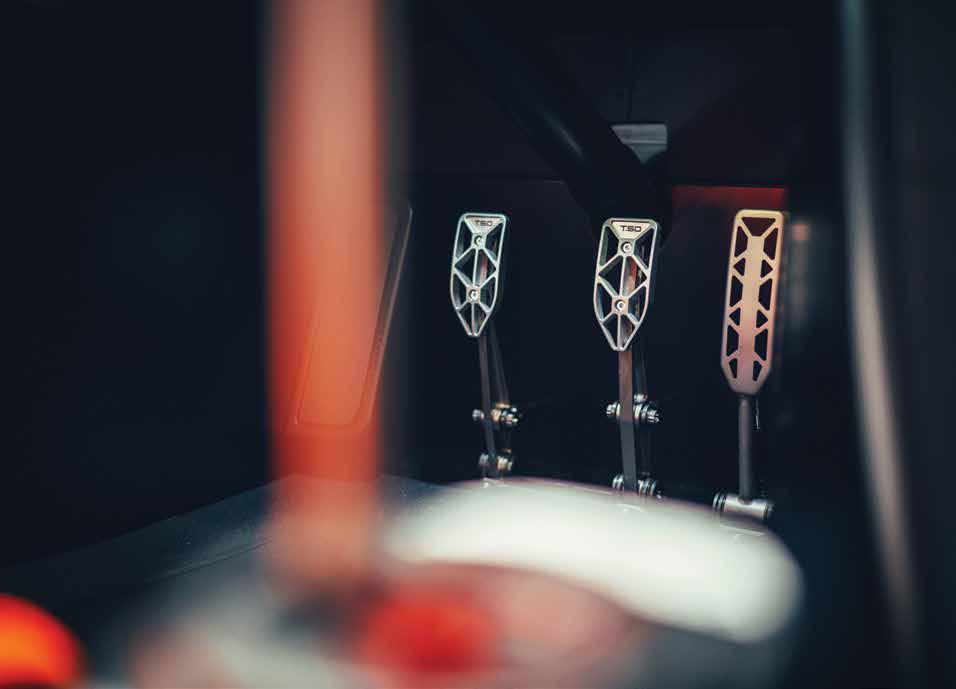

61
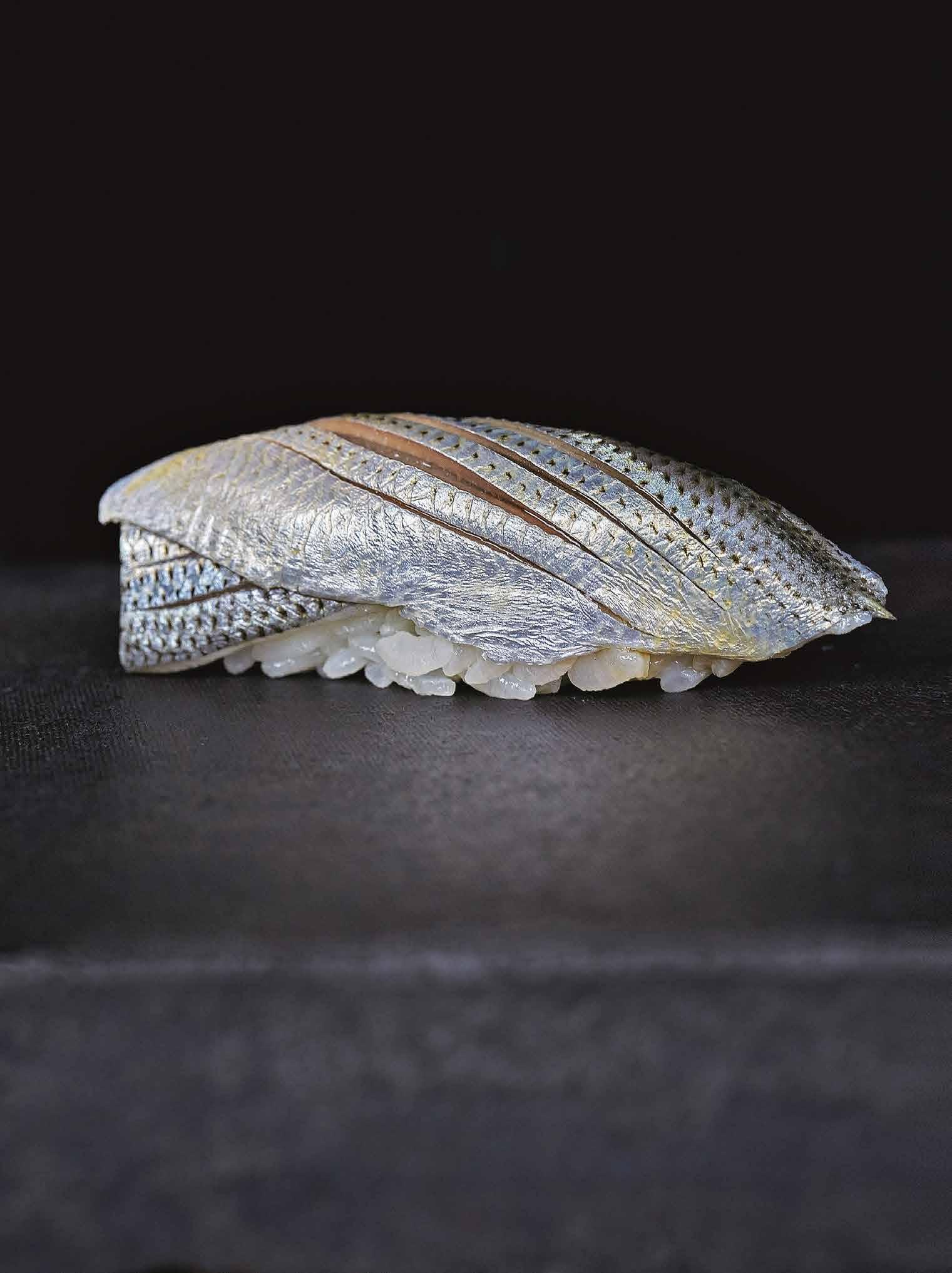
Raw Talent
A new book by award-winning photographer and author Andrea Fazzari charts her desire to gain a better understanding of sushi through revered shokunin
For a woman who has devoted so much of her time to discovering the ways of master sushi ‘shokunin’ – a Japanese term that roughly translates to ‘artisan’ – the journey of award-winning photographer and author Andrea Fazzari got off to an inauspicious start. Having contracted a tropical disease, Fazzari was instructed to change her diet, forgoing particular foods such as raw fish. Doing so while living outside of Japan didn’t prove much of a problem, but when Fazzari moved to Tokyo in 2015 sushi proved impossible to ignore. And so, a subsequent visit to the celebrated Nihonbashi Kakigaracho Sugita saw Fazzari have sushi again for the first time in years, something that would prove less a simple reacquaintance with a favoured food and more a transformative experience.
Gastronomy OCTOBER 2020 : ISSUE 109 62
AIR

63
“My apprehension melted away as I encountered flavours more complex and virtuosic than I had ever known sushi to possess, and I basked in hospitality more affecting than I could have imagined,” remembers Fazzari in her new book, Sushi Shokunin; Japan’s Culinary Masters (out this month, published by Assouline).
“I went on to dine at another outstanding sushiya, Sushi Saito. These mesmerizing meals fed my curiosity to learn more about sushi and its cultural significance.”
Fazzari would further feed her curiosity by shadowing 20 shokunin, devoting a chapter of herexperiences to each. What she learned from doing so was that each entered their profession by way of “a calling”, the role becoming “a way of life, with the highest possible sense of purpose and mastery.
“They are altruistic leaders, teachers, and artists of tremendous spirit and skill, who strive for excellence not only for themselves, but also for the benefit of others – their families, apprentices, customers, communities and regions,” Fazzari says of the shokunin. “This dedication to a lifelong pursuit of the highest level of mastery – spurred by an unwavering desire to constantly improve – affords all types of shokunin a respected and integral role in Japanese society, where the fruits of their discipline and talent have been enjoyed for centuries.”
Back to the time when Fazzari stepped into Nihonbashi Kakigaracho Sugita, it wasn’t only the sushi that was so affecting, but the hospitality.
“To me, Japanese hospitality – or omotenashi – is unparalleled in the world. Because of the characteristic
humble yet assured approach – which is also inherently elegant and inobtrusive – I always feel impeccably cared for. The kindest and most rigorous attention to detail is an immeasurable part of these two-and-a-half to threehour meals which I describe in the book. These masters are remarkably adept at reading and anticipating my needs and what I will enjoy, while crafting a sumptuous culinary and cultural experience. My time with them is not only an exceptional culinary adventure of texture and flavor, but also an adventure into design, art, seasonality, tradition, history, and Japan’s bounty.”
Fazzari describes herdining experiences in engaging detail, with one – at Sugita, helmed by shokunin Takaaki Sugita, whom Fezzari had previously befriended via her work on an earlier book – leaving her “moved beyond words.”
“Sugita’s way of making nigiri is distinctive and stirring,” says Fazzari, recalling the meal in the book. “As he slices the fish, with the knife’s blade gliding forward and back, he sways slightly and closes his eyes to better feel, and even hear, the ingredients. Then, when forming the nigiri he again closes his eyes, this time to feel and hear the grains of the shari (seasoned rice) with more precision. These acts demonstrate a sensory elegance and peaceful focus that impart Sugita’s own intentions and spirit into each of his culinary creations.”
Nigiri preparation is at the heart of Edomae (Edo or present-day Tokyo) style sushi, which the book focusses on. Details Fazari: “Invented around 1824 by Yoshi Hanaya as a ‘fast food’, nigiri
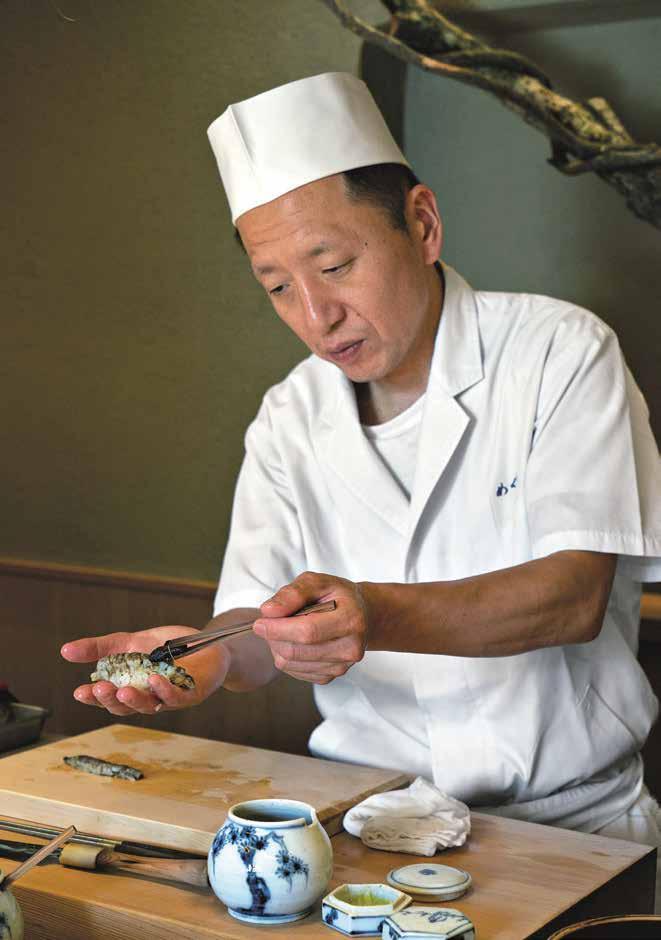


64 AIR
Opening pages, from left to right: gizzard shad (kohada) at Chikamatsu; fish box containing all cuts of tuna, from the leanest to the most fatty at Harutaka
This page, from top to bottom: Takayoshi Yamaguchi brushing a nigiri at Mekumi; the facade of Ningyocho Kizushi at dusk; Junya Kudo
usually consist of preserved or raw fish and seafood atop vinegared rice. Derived from the verb nigiru, meaning ‘to grasp or form with the hands, to shape or press,’ this pure and elegant creation embodies both the aesthetic of minimalism – the focus on the beauty of the essential – and the very masters who create them.”
Throughout the book, themes of perseverance, resilience, purpose, and the influence of family are overtly apparent, as is sheer hard work. “A typical workday does start – for most – very early morning at Toyosu market in Tokyo or other regional markets throughout Japan,” says Fazzari. “The rest of the day is spent getting ready for service. Usually, together with apprentices, hours and hours are dedicated to cleaning, preparing and curing the fish and seafood –this includes techniques like drying, smoking, salting and pickling – and preparing the shari, which is seasoned rice. Dinner service likely ends around midnight – or when the last guest leaves – followed by a couple of hours cleaning the restaurant. Then the whole processes recommences the next day. The work day is long, so conviction and sense of purpose – or ikigai in Japanese – keeps shokunin motivated.”
At the likes of Tokyo’s Toyosu market
‘My apprehension melted away as I encountered flavours more complex and virtuosic than I had ever known sushi to possess’
you’d expect competition for the best fish and seafood to be fierce, so how do shokunin ensure that they get the very best for their restaurants? “It is all about relationships and the trust which the shokunin have in their suppliers,” says Fazzari. “The top wholesalers at Toyosu ensure that the highest quality fish and seafood is passed on to their customers - who are the shokunin. Together they have built relationships, establishing expectations and clear communication in order to source the finest products. It is a team effort; each relies on the other for their discernment and expertise.”
Just as important as the produce they serve, however, is the setting of a shokunin’s restaurant. “It’s integral to the feel of the Edomae sushi dining

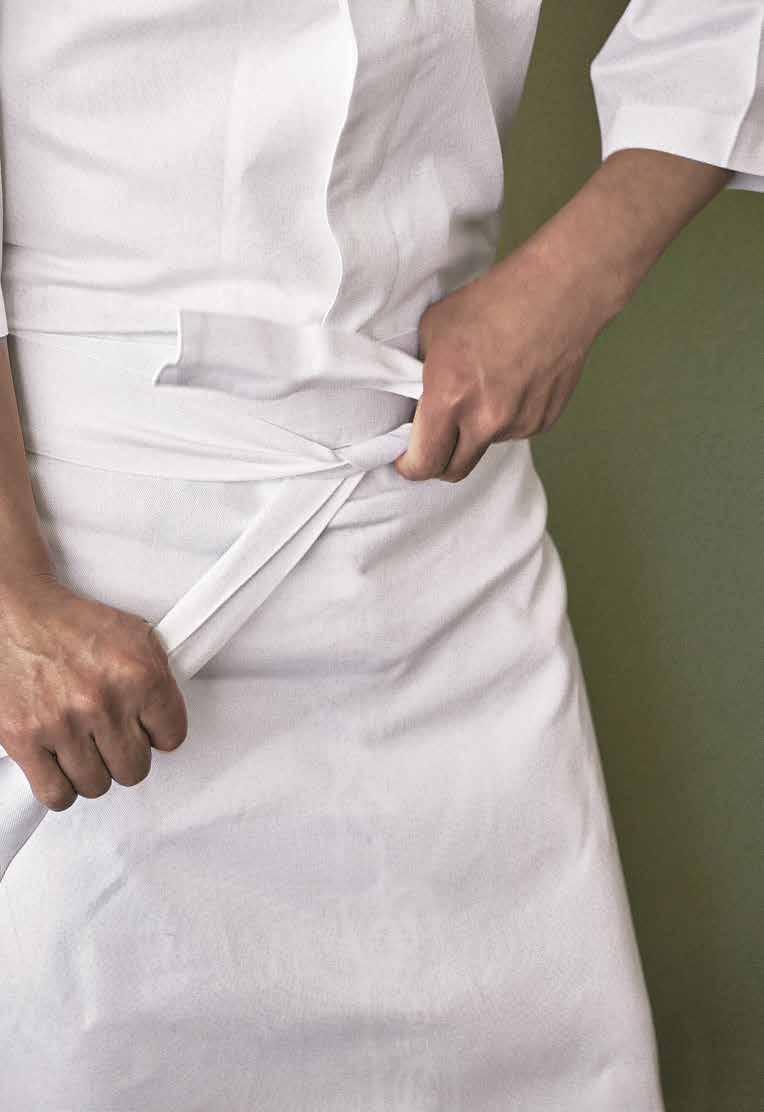
experience,” details Fazzari. “It conveys the shokunin’s intent as much as the sushi itself. Shokunin spend much time planning the interiors of their sushiya within the historical context of sushi: different materials such as the wood, as well as the chosen colours are imbued with meaning. Simple yet refined, uncluttered spaces convey peace and serenity – they are the backdrop for the shokunin himself.”
Having now eaten at some of the world’s finest sushiya, what is it that elevates them beyond all others? “The skill level of these shokunin and their ingredients are top tier: like in any profession there are those who are truly masters, and those who are not. The details and all-encompassing beauty of true masters cannot be easily replicated by those who have not dedicated their lives to their craft.”
And Fazzari’s overarching takeaway from her time with the shokunin? “Simple is best. Ever present in the sushi world – whether in restaurant décor or the sushi itself – this disarming style of expression is, to me, more gripping than the flourishes of Versailles.”
Sushi Shokunin; Japan’s Culinary Master, by Andrea Fazzari, is out now, published by Assouline assouline.com

65
This page, from left to right: P Harutaka Takahashi tying his apron; guests dining at Sushi Sho in Honolulu. All images by © Andrea Fazzari
JOURNEYS BY JET
Four Seasons Resort Seychelles at Desroches Island
Seychelles
During the height of the pandemic, when only our thoughts were free to travel, they’d often venture to paradisiacal islands such as Desroches, a sliver of unblemished beauty in the outer islands of the Seychelles, where the only distraction to daily life is the morning birdsong. Protected, remote, and abundantly blessed by Mother Nature’s finest (diving here is an otherworldly experience), the adornments to this treasured island (on which you can land your own jet) come courtesy of Four Seasons – and are equally jaw-dropping. Elegant, expansive, multi-roomed (and reassuringly private on account of being spaced out across an island that’s ringed by some nine miles of beaches) the broad range of Villas, Suites, and Residence Villas are without equal in the Seychelles.
Come here as a couple to be secluded in a Beach Pool Villa. Hidden away amidst towering palm trees, you’ll have a private plunge pool and furnished terrace, from which your lazy days will be soundtracked by gentle waves lapping at the shore mere metres beyond you. For groups and families, there are two- to five-bedroom Residence Villas, each served by a dedicated Residence Host. Located on the island’s picture-perfect north-west coastline, the Residence Villas are vast, featuring a full-sized kitchen, dining area, open-air living areas, an infinity pool, tropical garden and expansive sun terrace.
Yet grander still is the Seven-Bedroom Presidential Villa, the pinnacle of the resort’s accommodations. Set up to house 16 guests, including up to eight children, the villa stetches its finery over 7,500 sq.ft, providing ample space for in-house spa treatments and one-on-one yoga sessions.
To explore your private paradise (private, that is,
but for the magnificent Aldabra giant tortoises which you’ll thrillingly encounter around the island) each accommodation comes with bicycles, kayaks, and stand-up paddle boards. Take your preferred mode of leisurely travel to your own slice of sand – there’s enough for everyone – to enjoy an artisinal picnic oceanside, delivered by the resort’s excellent deli.
The call of the ocean is deafening here, and whether diving or simply snorkelling, it begs to be explored. Take the plunge and your reward is one of the most breathtakingly beautiful sights on Earth - The Desroches Drop. So-named on account of being a sheer drop where the turquoise shallow waters of the lagoon suddenly give way to the sapphire of the Indian Ocean, you’re submerged into an aquariumlike world; caves, canyons, secret passages and spectacular reef walls all yours to explore alone.
This is also one of the world’s foremost fishing spots – do it alongside the resort’s Executive Chef, who doubles as a seasoned fisherman and will cook your catch once back on shore.
Such personal service comes as standard across the resort, whether a tailored relaxation experience at the spa, or a shoes-off, starlit dinner on the sand, best bookended by drinks at the Lighthouse Lounge, which towers majestically over the island to afford sweeping, unbroken views of your soul-stirring surrounds.
This is paradise on your terms (each day in Desroches is fully customisable), a truly unique place that, once experienced, will stay in your thoughts forever.
You can land your jet directly onto the airstrip at Desroches Island, or sail in on your yacht. Private transfers are also offered from Mahé.




AIR 66





67
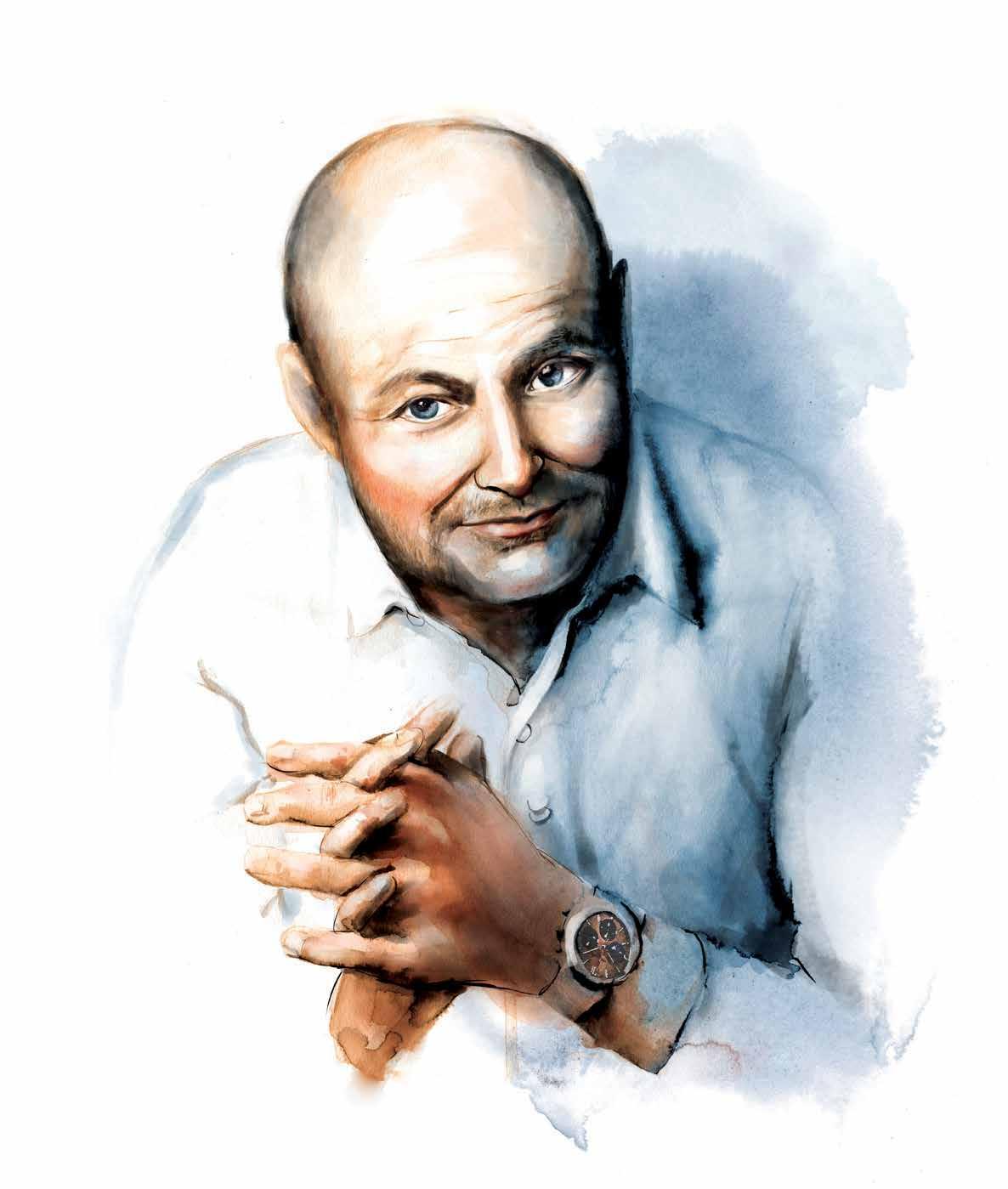
Georges Kern
CEO, BREITLING
Early on I was told, ‘Trust your instincts and your intuitions; in short, if you have a gut feeling about something, you should act on it.’ This has proven to be great advice, not only in business but in every aspect of my life.
I’ve been privileged to work alongside great and super smart people in all my jobs and was fortunate enough to always have had a connection to the top management: Nico Issenmann at Kraft Jacobs Suchard; Christian Viros at TAG Heuer; Franco Cologni and Johann Rupert at Richemont; and now Alexander Dibelius at CVC.
Over time, I have come to understand the power of delegation. When I was first working in the industry, like so many young managers, I thought that I was Superman and could take care of every detail by myself. I know now the value of surrounding myself with talented colleagues.
My father, René Kern, was a jeweller in Düsseldorf, so my initial exposure to the world of luxury came very early. He taught me to walk through life with open eyes and to take inspiration from everything. To look at what’s going on in the car industry, the art, fashion and film industries. What are the trends? New technologies? Which materials are they using? The outside world and other industries inspire me daily.
Personal success is defined in part by being able to find and follow your own passion, to feel truly committed to something. Another important aspect of personal success is being able to look at my family and tell myself that, ‘I must be doing something right!’
One thing I would say now to my younger self is, ‘Know that there will be time to do all the things you want to do. It doesn’t all have to happen at once.’

68 What I Know Now OCTOBER 2020:ISSUE 109
AIR


PRAETOR 600: CERTIFIED OUTPERFORMANCE.
The Praetor 600 — the world’s most disruptive and technologically advanced super-midsize aircraft that leads the way in performance, comfort and technology.
Unveiled at NBAA in October 2018 and now certified by ANAC, FAA and EASA, the Praetor 600 did not just meet initial expectations, it exceeded them. Named for the Latin root that means “lead the way,” the Praetor 600 is a jet of firsts. It is the first super-midsize jet certified since 2014. The first to fly beyond 3,700 nm at M0.80. The first with over 4,000 nm range at LRC. The first with full fly-by-wire. The first with Active Turbulence Reduction. The first with a cabin altitude as low as 5,800 feet. The first with high-capacity, ultra-high-speed connectivity from Viasat’s Ka-band. And all of this, backed by a first-placed Customer Support network.
Learn more at executive.embraer.com/praetor600.
LEADING THE WAY


 KEIRA KNIGHTLEY
KEIRA KNIGHTLEY







































































































